Special Report
The Biggest News Story Every Year Since 1950

Published:
Last Updated:

Each year there are major news events that capture the world’s attention. These stories range from massive conflicts or catastrophes that leave thousands dead or stranded to technological developments and Supreme Court decisions that completely change our daily lives.
24/7 Wall St. reviewed the biggest news stories of each year since 1950. The event we chose for a given year was not always the most talked-about story when it occurred, but in retrospect each one proved to have had the biggest impact on history.
Wars and conflicts stand out as major news events during this time period, but so do stories about milestones in civil rights and breakthroughs in science and medicine. As technology evolved, modifying and innovating our lives in ways never dreamed of, progressive ideas also found footing and changed the world. Women, African Americans, and the LGBTQ community demanded, and often won, equal rights — from the desegregation of education to the legalization of same-sex marriage. Here are the most important human rights milestones since 2000.
Increasingly, major news events in recent years have included severe weather events and other catastrophes tied to global climate change. Devastating changes to our climate now endanger the ecosystems of our planet. In the coming years, natural disasters may have an increasingly impactful role on the course of history. Here are 26 disaster scenarios caused by climate change.
Click here to see the biggest news story every year since 1950.
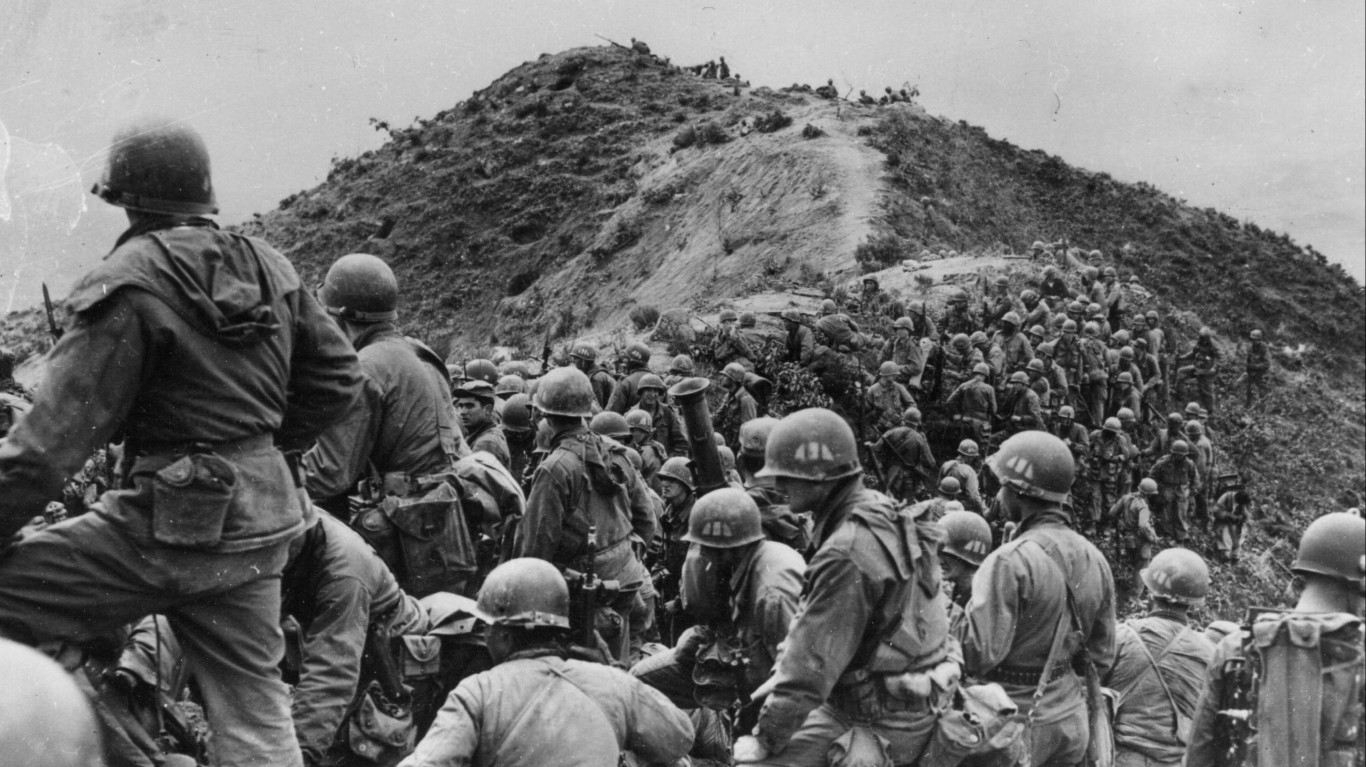
1950: Korean War starts
> Date: June 25
> Location: Korea
The North Korean People’s Army crossed the 38th parallel into South Korea, which prompted an almost immediate response from U.S. President Harry Truman and marked the beginning of the Korean War — a proxy battle between the United States and the People’s Republic of China. The parties would agree to a ceasefire three years later. The uneasy relations between North Korea and South Korea last to this day.
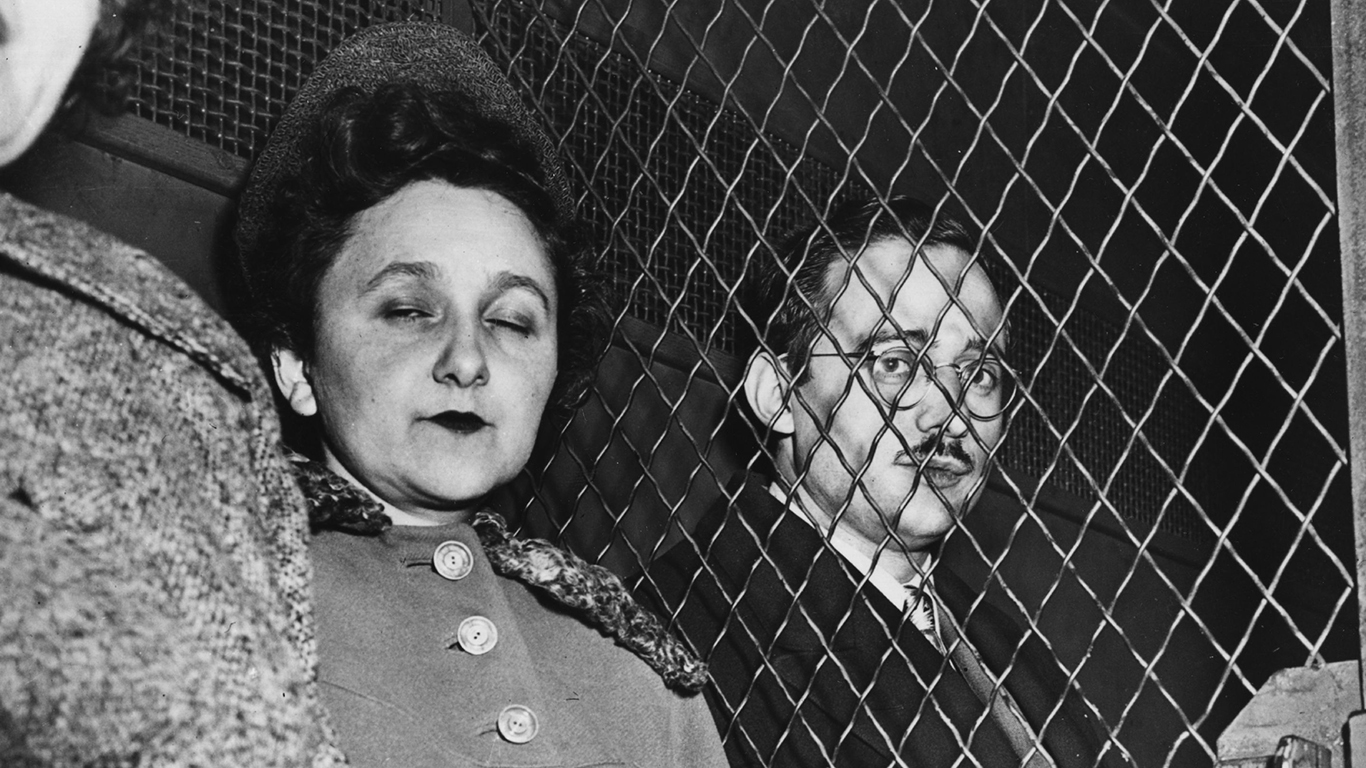
1951: Rosenbergs sentenced
> Date: March 29
> Location: New York City
Husband and wife Julius and Ethel Rosenberg were convicted of espionage for their part in passing along atomic secrets to the Soviet Union during and after World War II. They were executed two years later. Not everyone was convinced of their involvement in the scheme. Supporters claimed they were scapegoats swept up in the Cold War hysteria of the time. Documents would reveal decades later the extent of Julius Rosenberg’s involvement in the spy ring, though Ethel’s participation in the scheme remained inconclusive.
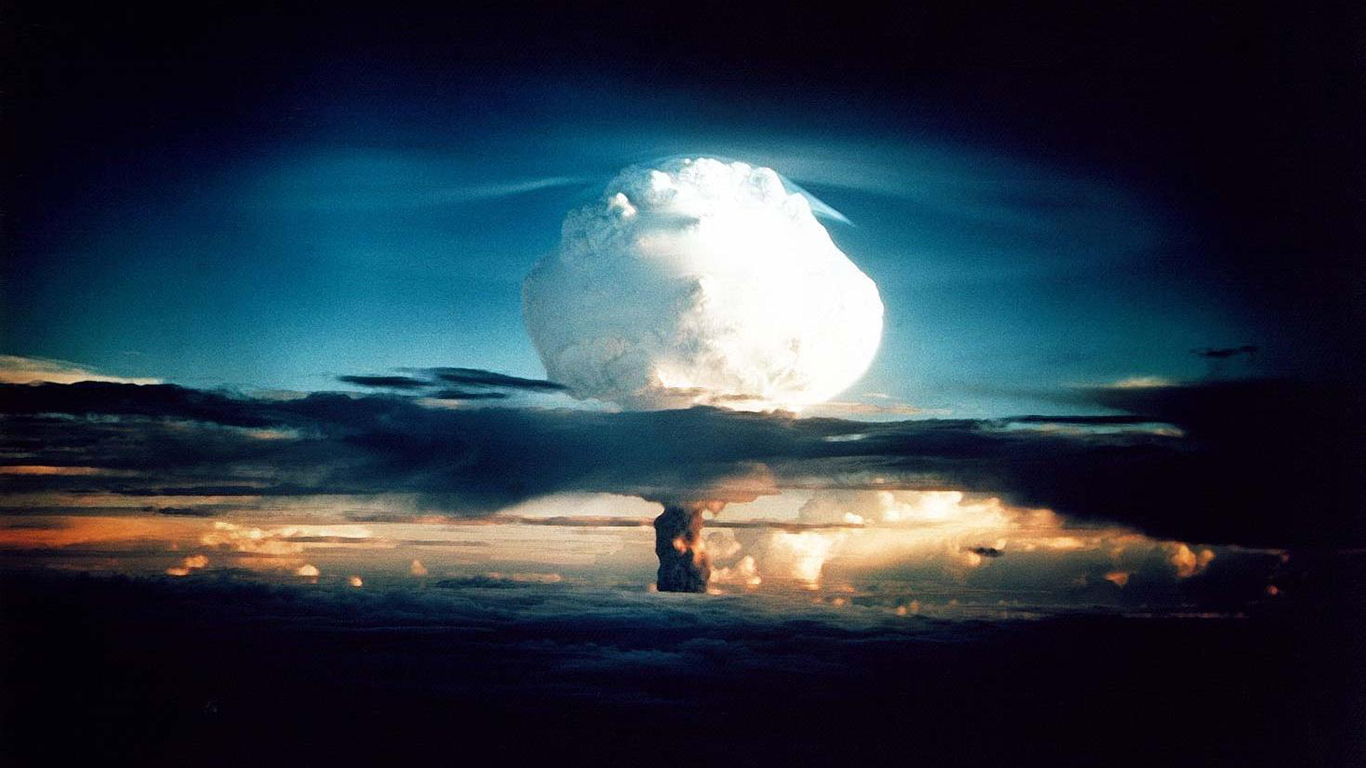
1952: First hydrogen bomb test
> Date: Nov. 1
> Location: Marshall Islands
The United States successfully detonated its first hydrogen bomb, a second-generation thermonuclear device. The detonation in the Marshall Islands was part of Operation Ivy, one of a series of nuclear bomb tests. From 1946 to 1958, the United States used the remote Pacific Marshall Islands as its nuclear weapons testing site, conducting a total of 67 nuclear tests.

1953: The dawn of DNA
> Date: Feb. 28
> Location: Cambridge, England, U.K.
Cambridge University scientists James Watson and Francis Crick announced that they have discovered the double-helix structure of DNA. Though scientists had been aware of DNA since the 1860s and of its role in genetic inheritance since 1943, Watson and Crick were the first to explain how DNA works to replicate itself and pass on genes from one generation to the next.
[in-text-ad-2]
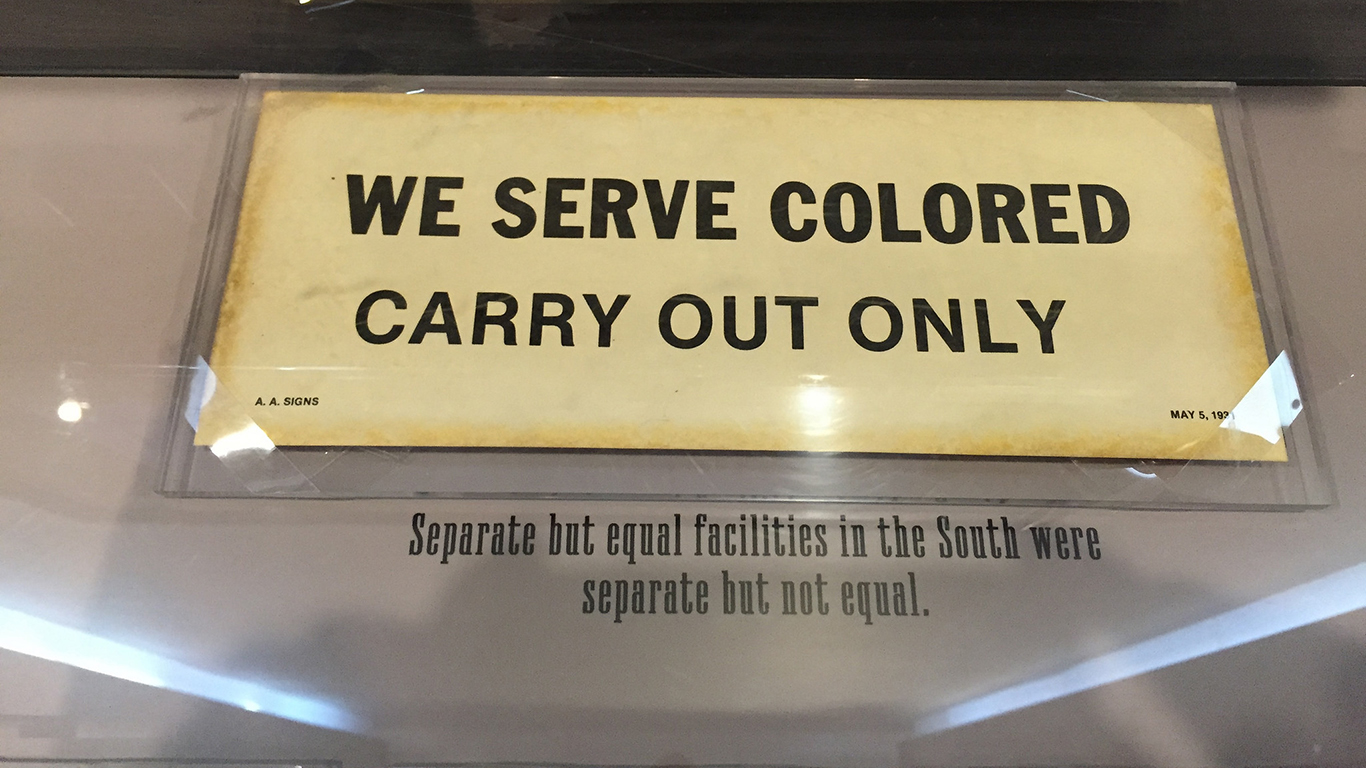
1954: Brown v. Board of Education
> Date: May 17
> Location: Washington D.C.
In a landmark case that involved Linda Brown of Topeka, Kansas, who had to cross a railroad track to reach an all-black elementary school even though an all-white school was closer, the U.S. Supreme Court ruled that the segregated school system is unconstitutional on the basis of the Equal Protection Clause of the 14th Amendment of the Constitution. The clause would be used again by the courts to reverse state-level racial segregation practices and ordinances.

1955: Parks starts a movement
> Date: Dec. 1
> Location: Montgomery, Alabama
Rosa Parks made history after she refused to give up her seat to a white passenger on a Montgomery bus. Her arrest for insisting to remain seated led to the Montgomery Bus Boycott and the ascent of a young pastor named Martin Luther King, Jr., as a local activist leader working to advance the civil rights cause. A successful federal lawsuit by the NAACP against the city led to the desegregation of the Montgomery bus system.

1956: Soviets suppress Hungary
> Date: Nov. 4
> Location: Budapest
After the start of the Cold War, Hungarians took to the streets to demand democratic reforms in October of 1956. The Soviet Red Army troops invaded Hungary and killed thousands. Nine days after the incursion, on Nov. 4, Soviet troops occupied Budapest in one of the largest and most aggressive actions taken by the Soviet Union since the end of World War II.
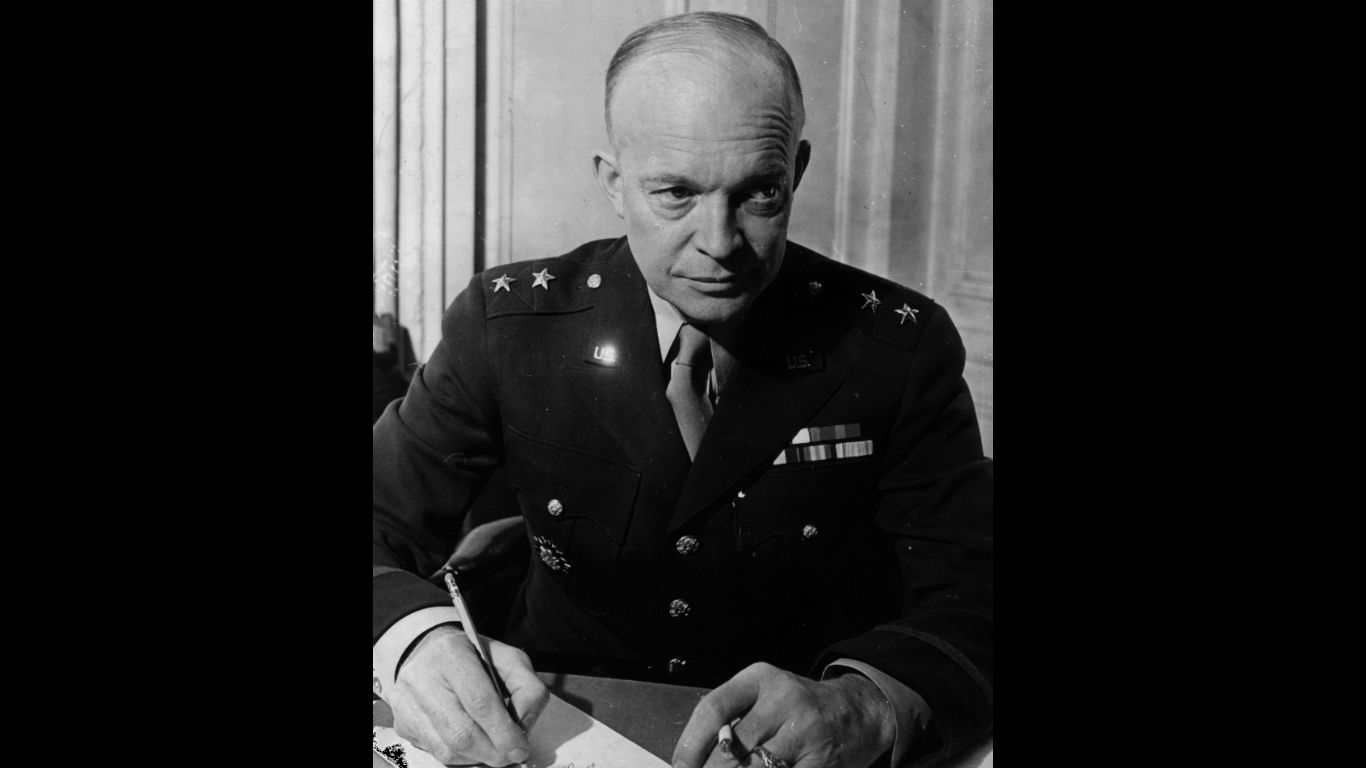
1957: The Little Rock Nine
> Date: Sept 24
> Location: Little Rock, Arkansas
President Dwight D. Eisenhower ordered federal troops to protect nine African-American high school students as they started classes at the all-white Little Rock Central High School. This would become one of the first high-profile actions the federal government would take against state-level racial segregation.
[in-text-ad]

1958: US launches first satellite
> Date: Jan. 31
> Location: Cape Canaveral, Florida
The United States successfully launched Explorer 1, three months after the Soviet Union sent its first satellite, Sputnik, into orbit. The two superpowers would go on to send more satellites into space, creating a Cold War space race to build ever more sophisticated orbital communications devices in their quest to achieve spaceflight capabilities and generally space superiority.
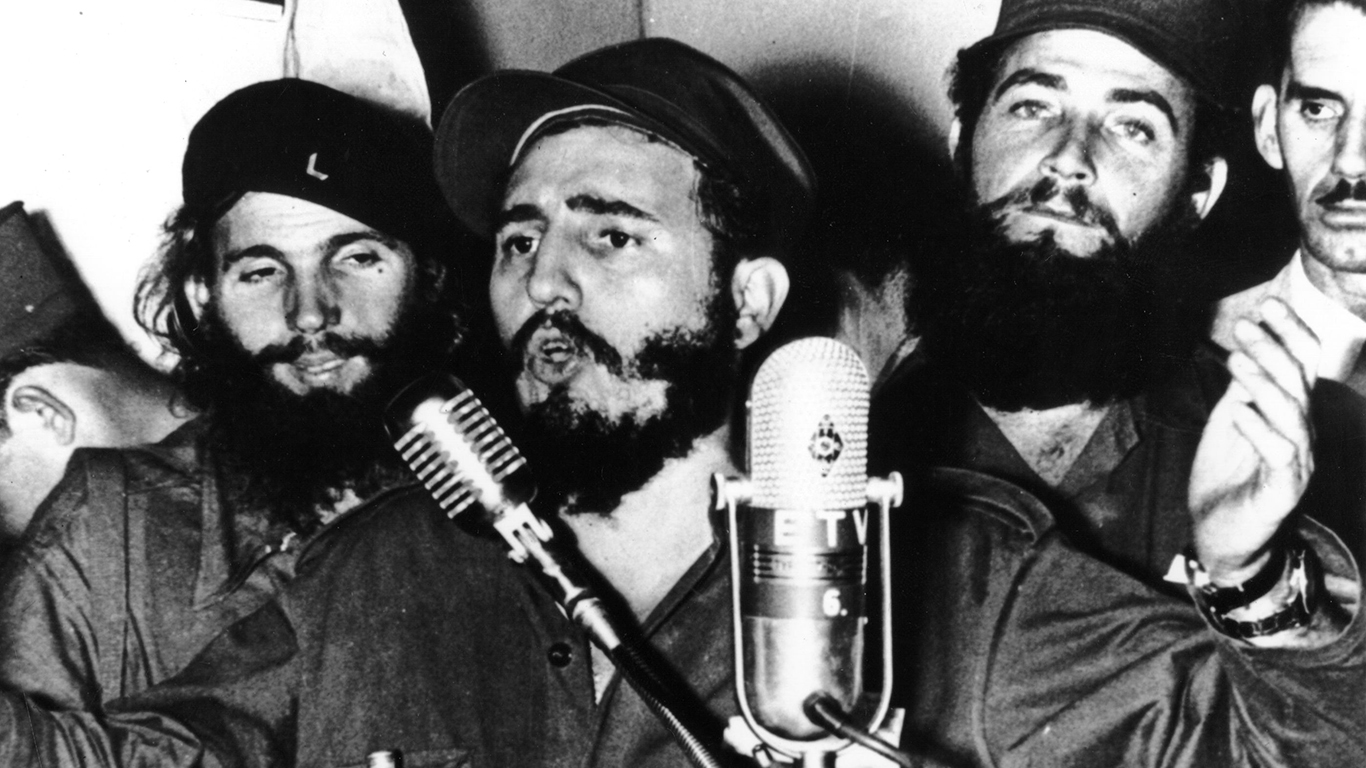
1959: Castro takes over Cuba
> Date: Jan. 1
> Location: Havana
U.S.-backed dictator Fulgencio Batista fled Havana as Fidel Castro’s forces advanced on the Cuban capital. Days later, rebels led by Che Guevara and Camilo Cienfuegos entered the city, followed two days later by Castro’s forces. Castro quickly consolidated power in Cuba, establishing a communist government in the Caribbean’s largest country.
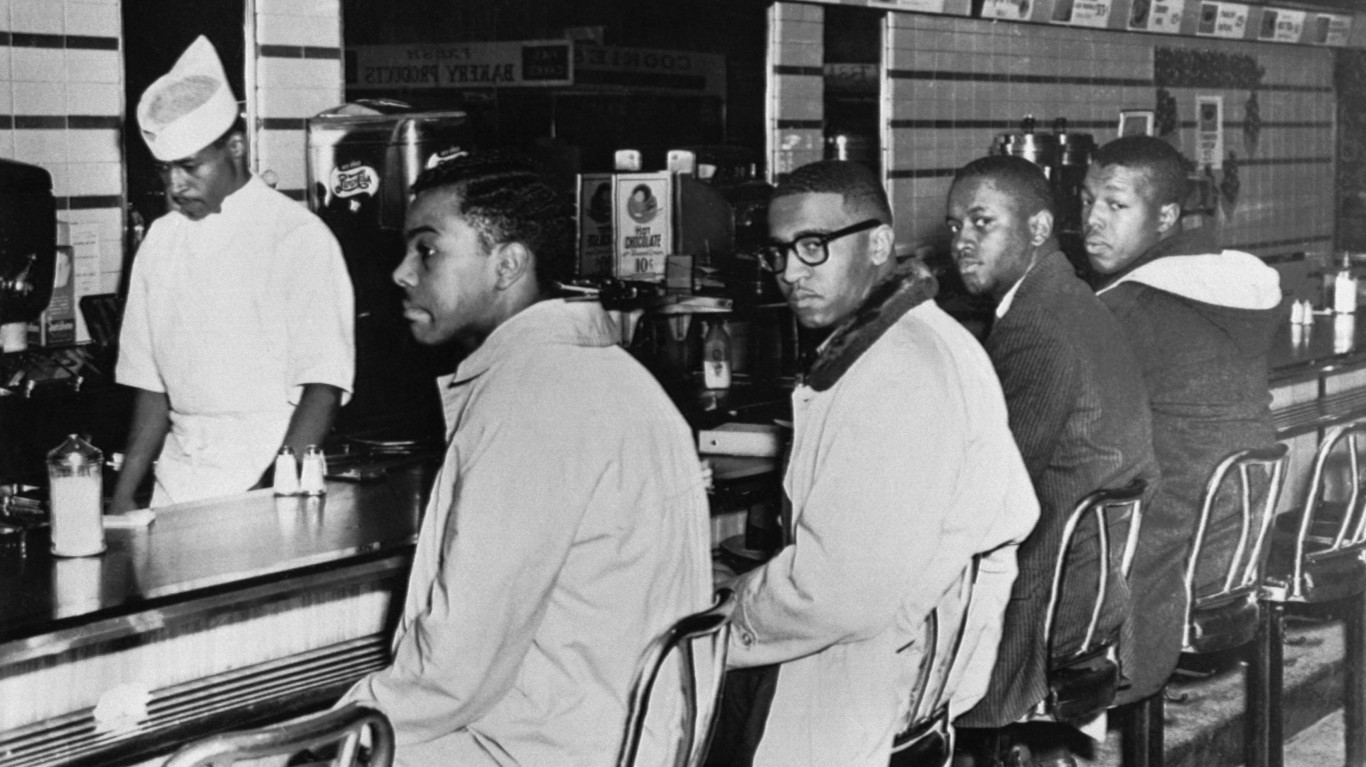
1960: Lunch counter sit-in
> Date: Feb. 1
> Location: Greensboro, North Carolina
When four African American college students — Ezell A. Blair, Franklin E. McCain, Joseph A. McNeil, and David L. Richmond — sat down at a Woolworth’s lunch counter and asked for service, they were denied. The young men refused to give up their seats, and their sit-in led to a larger six-month protest that resulted in the desegregation of the lunch counter by that summer and at many other restaurants across the South.

1961: Berlin Wall built
> Date: Aug. 13
> Location: Berlin, East and West Germany
By the late summer of 1961, the loss of skilled workers such as teachers, engineers, and doctors to the West reached crisis levels in East Germany. On Aug. 12, 2,400, East Germans crossed into West Berlin, the most in a single day. The next day, with the approval of Soviet Premier Nikita Khrushchev, East Germany began building a wall that would extend 27 miles through Berlin, dividing families and friends for the next 28 years. The wall would serve as an enduring symbol of the Cold War, used by presidents John Kennedy and Ronald Reagan to inspire a divided city.
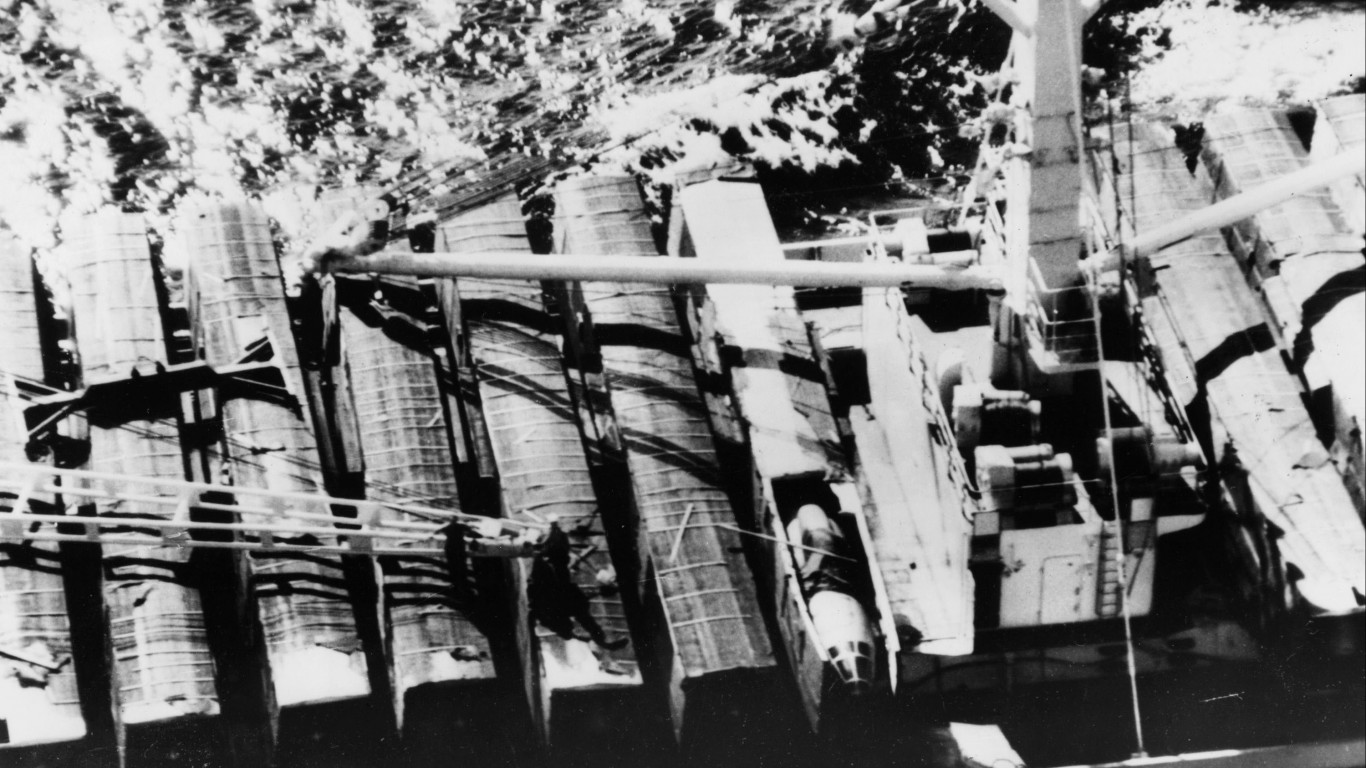
1962: Cuban missile crisis
> Date: Oct.16-28
> Location: Multiple
When the United States learned that the Soviet Union was building nuclear missile installations 90 miles south of Miami in communist Cuba, the Kennedy administration erected a naval blockade around the island, which was at times tested, to demand the removal of the missiles. The standoff was widely considered to be the closest the two nuclear superpowers come to direct military confrontation. Cooler heads prevailed. The Soviet Union offered to remove the missiles in exchange for a guarantee that the United States would not invade Cuba. In secret, the administration also agreed to withdraw U.S. missiles from Turkey.

1963: JFK assassinated
> Date: Nov. 22
> Location: Dallas
As John F. Kennedy prepared for his re-election bid, the 35th president of the United States embarked on a multi-state tour in September 1963. He was murdered by Lee Harvey Oswald at about 12:30 p.m. as his motorcade passed through Dealey Plaza in Dallas. Oswald himself was murdered two days later by nightclub owner Jack Ruby.
[in-text-ad-2]
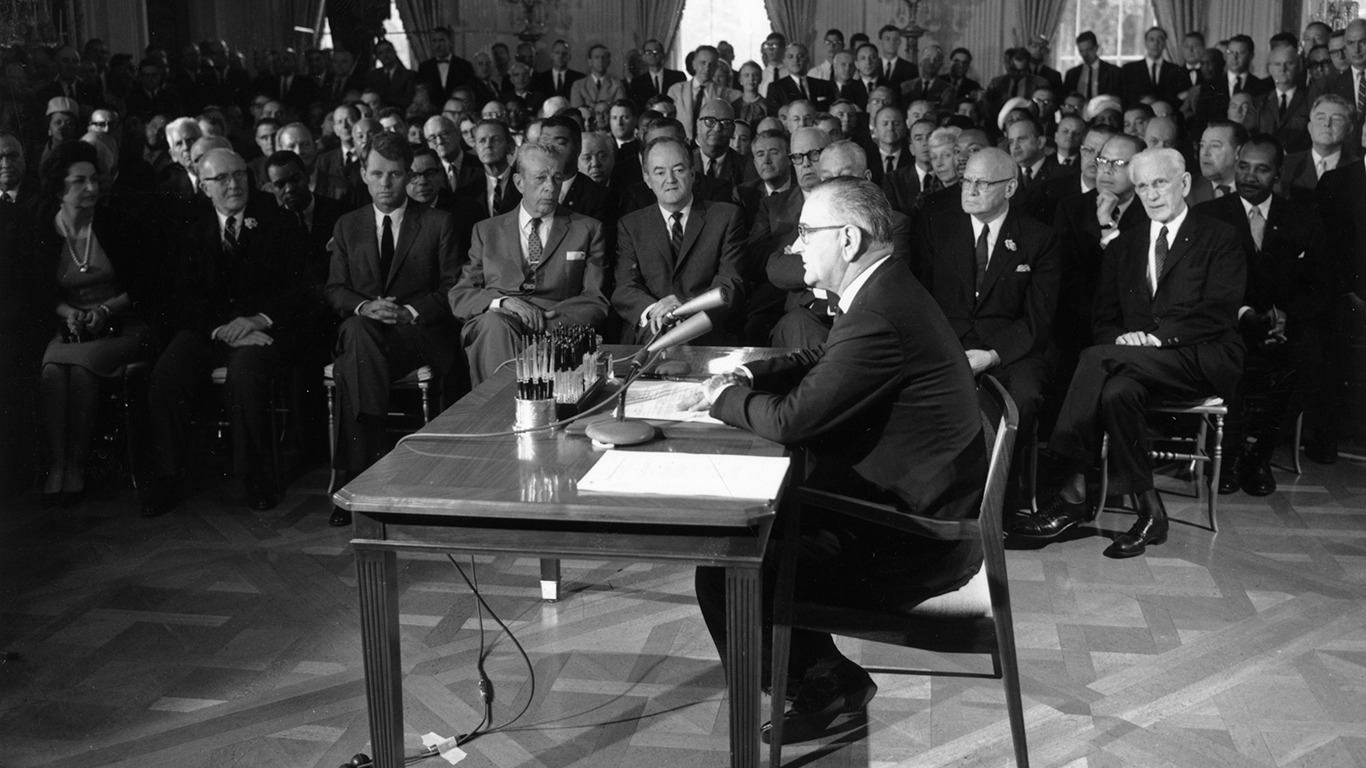
1964: LBJ’s “War on Poverty”
> Date: Jan. 8
> Location: Washington D.C.
During his “War on Poverty” State of the Union Address of Jan. 8, 1964, President Lyndon B. Johnson detailed the need for the country to reduce poverty, end racial discrimination, attend to the health needs of the elderly, and other progressive goals. LBJ later signed in the Civil Rights Act of 1964 and the Social Security Amendments of 1965.
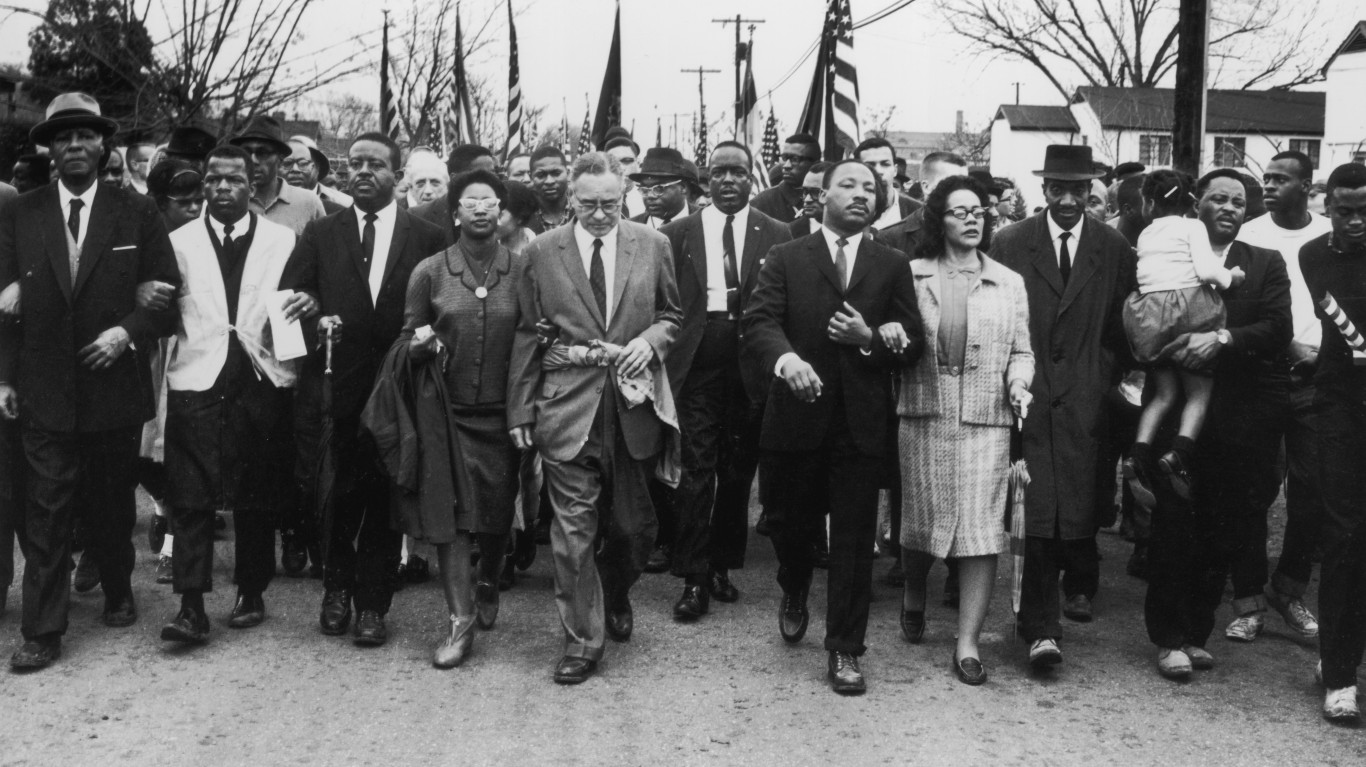
1965: Selma to Montgomery march
> Date: March 7
> Location: Selma, Alabama
The fatal shooting of protester Jimmy Lee Jackson by an Alabama state trooper sparked a march in the state from Selma to Montgomery. Hundreds of civil rights activists marched in what became known as “Bloody Sunday.” Police confronted the marchers, led by John Lewis (who is now a House Democrat from Georgia) and others. As the activists crossed the Edmund Pettus Bridge over the Alabama River, police attacked the protesters with tear gas and billy clubs, hospitalizing 50.

1966: Mao purges rivals
> Date: Aug. 13
> Location: Beijing
At the end of a weeklong session of the Communist Party Central Committee of the People’s Republic of China, Chairman Mao Zedong condemned the political elites, calling on China’s youth to rebel against the entrenched political hierarchy. It was the start of the decade-long Cultural Revolution that fundamentally transformed Chinese society. Intellectuals, members of the former Nationalist government, and people with ties to Western powers were persecuted, sent to re-education labor camps, or killed by factions of the Red Guards.
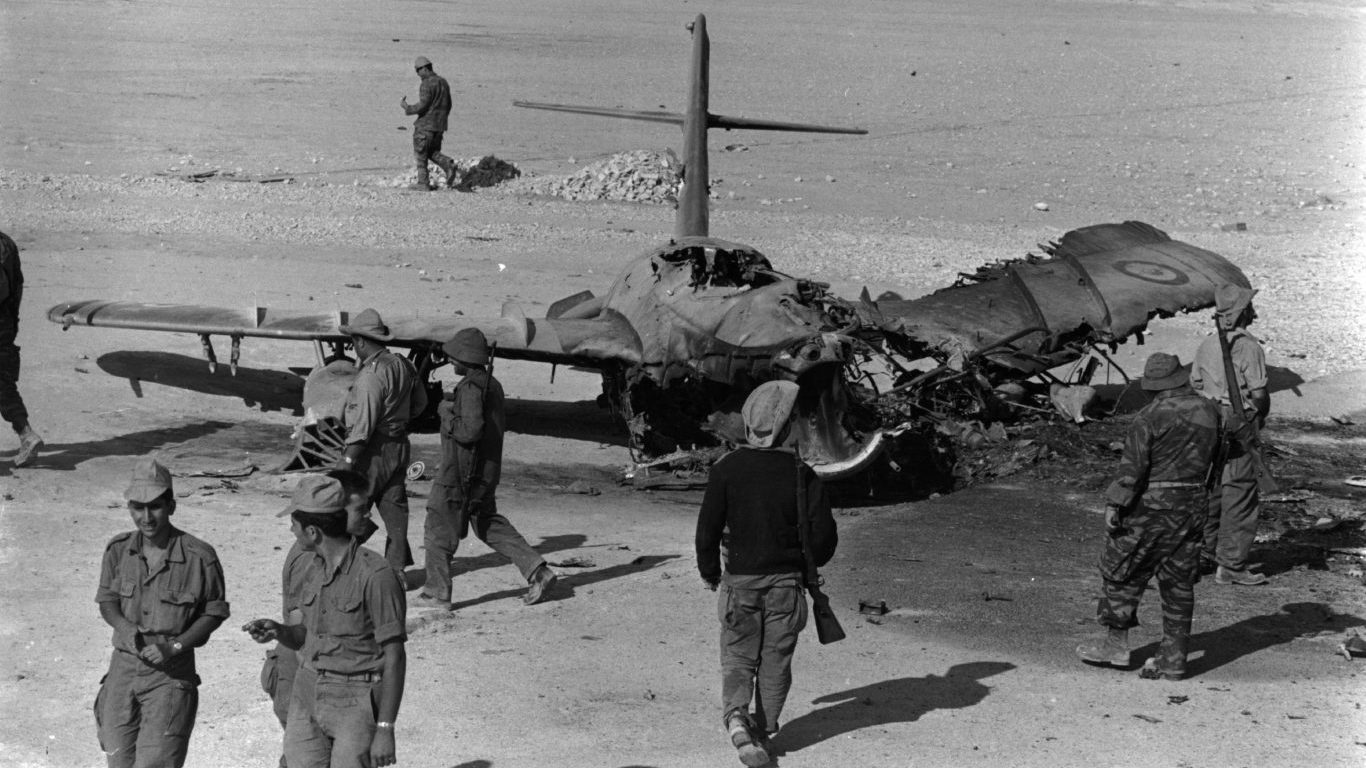
1967: Six-Day War
> Date: June 5
> Location: Middle East
Amid escalating tensions with its neighbors, Israel launched a pre-emptive strike that destroyed most of Egypt’s air force. Syria, Jordan, and Iraq also attacked Israel. As the war continued, Israel took the Gaza Strip and the Sinai Peninsula from Egypt, captured East Jerusalem and the West Bank from Jordan, and in heavy fighting seized the Golan Heights from Syria. A ceasefire went into effect on June 10.
[in-text-ad]
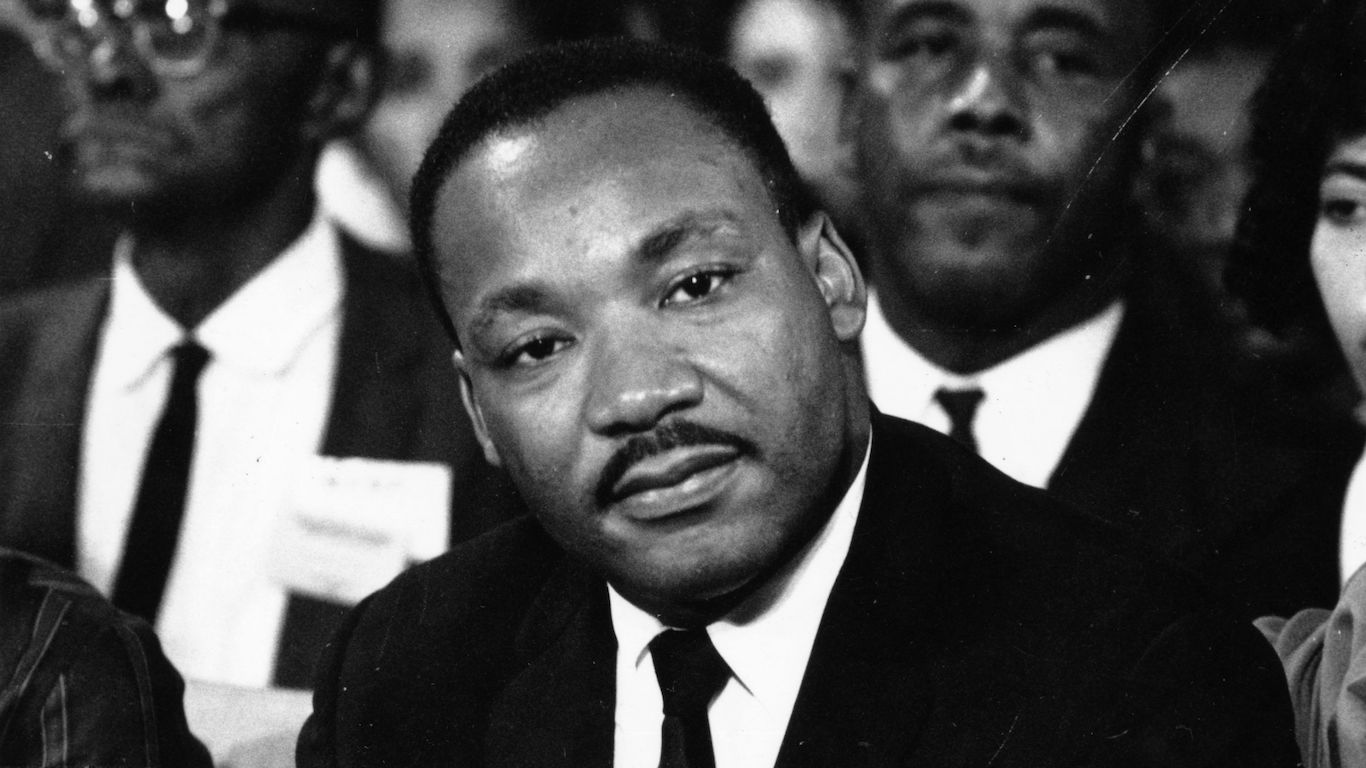
1968: King assassinated
> Date: April 4
> Location: Memphis, Tennessee
Rev. Dr. Martin Luther King, Jr., was fatally shot by James Earl Ray as the civil rights icon stood on the balcony of the Lorraine Motel, a tragedy that sparked race riots nationwide. King’s influence in words and actions touched and moved not only the nation, but the world, and resonate to this day. Two months later, on June 4, Democratic presidential candidate Robert F. Kennedy and brother of John F. Kennedy, was fatally shot by Sirhan Sirhan, a Christian Palestinian from Jerusalem, who believed Kennedy was “instrumental” in oppressing Palestinians.
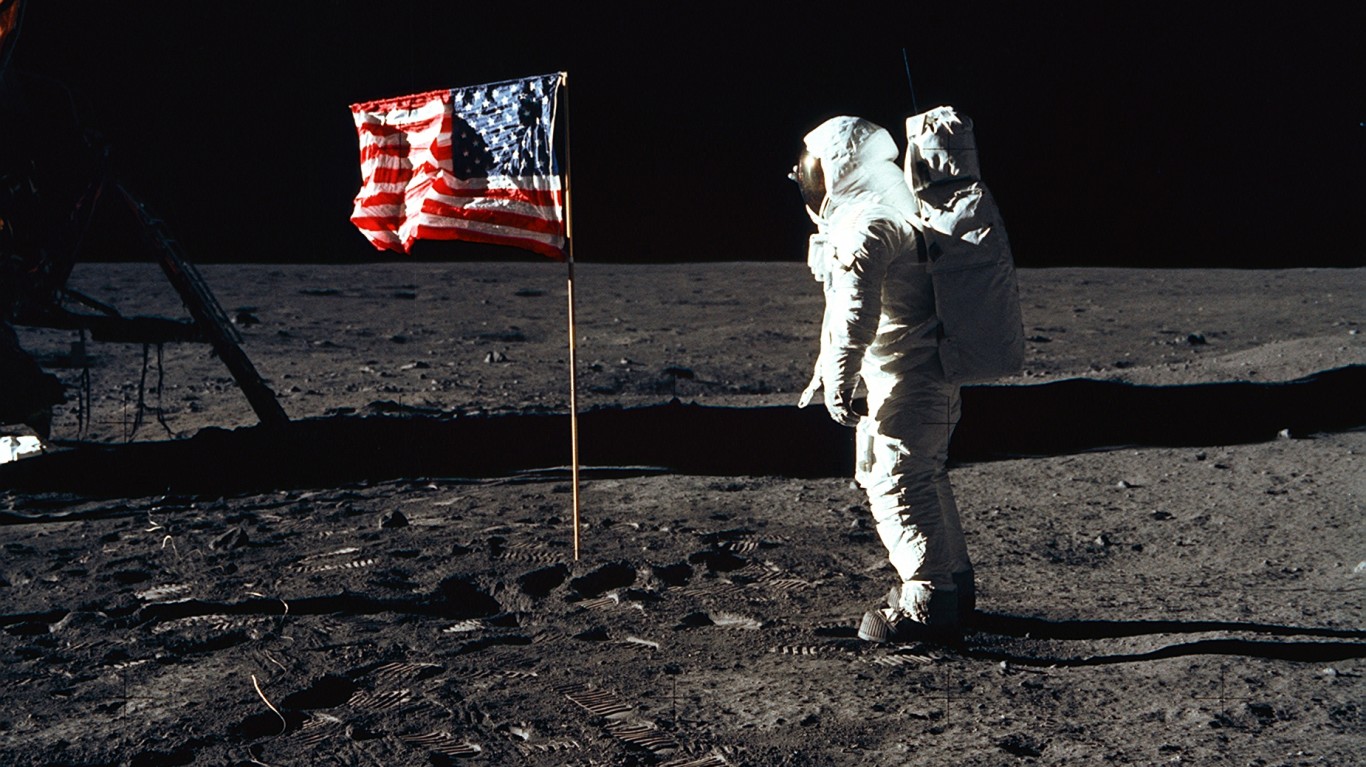
1969: Landing on the moon
> Date: July 20
> Location: Moon
President Kennedy’s goal of a manned lunar landing before 1970 is realized six years after his assassination. Neil Armstrong, Buzz Aldrin, and Michael Collins blasted off from the Kennedy Space Center on July 16 at 9:32 a.m. aboard the Saturn V rocket. Armstrong and Aldrin landed the Eagle module on the lunar surface as Collins remained in lunar orbit to pilot the module. Upon their return to Earth, the three astronauts were put in 21-day quarantine to ensure they did not bring back any lunar contagions.

1970: War spreads to Cambodia
> Date: April 29
> Location: Eastern Cambodia
Even as sentiment in the United States had turned against American involvement in Vietnam, President Richard Nixon approved an operation with the South Vietnamese to invade Cambodia to oust communist forces there. The Cambodian incursion inflamed anti-war protests in the United States as it was perceived to be an escalation of U.S. military involvement in Southeast Asia.

1971: Pentagon Papers
> Date: Feb. 8
> Location: Laos
The Pentagon Papers, a report by the U.S. Department of Defense about the country’s involvement in the Vietnam War, were released and published first in The New York Times, then other newspapers. The documents exposed several missteps and how several administrations had misled the American public about how involved the military was in Southeast Asia and about plans to escalate the war in 1964. They also revealed an expanded campaign in Cambodia and Laos, especially clandestine bombing in Laos.

1972: Nixon goes to China
> Date: Feb. 21
> Location: Beijing
Nixon, a virulent anti-communist earlier in his political career, surprised the American public when he traveled to Beijing for a week of talks in a historic first step toward normalizing relations between the United States and the People’s Republic of China. Until this trip, the United States and communist China were de facto enemies, fighting proxy wars on the Korean Peninsula in the 1950s and South Vietnam at the time of Nixon’s visit.

1973: Roe v. Wade
> Date: Jan. 22
> Location: Washington D.C.
In a landmark 7-2 decision that would come to be known as Roe v. Wade, the Supreme Court ruled that under the Due Process Clause of the 14th Amendment, abortion was a fundamental right protected by the United States Constitution. The court added that as the pregnancy develops the state can balance a woman’s right to privacy with its interest in preserving the “potentiality of human life.” As a result, states can ban abortion in the third trimester except in cases where a pregnancy affects a woman’s health.
[in-text-ad-2]
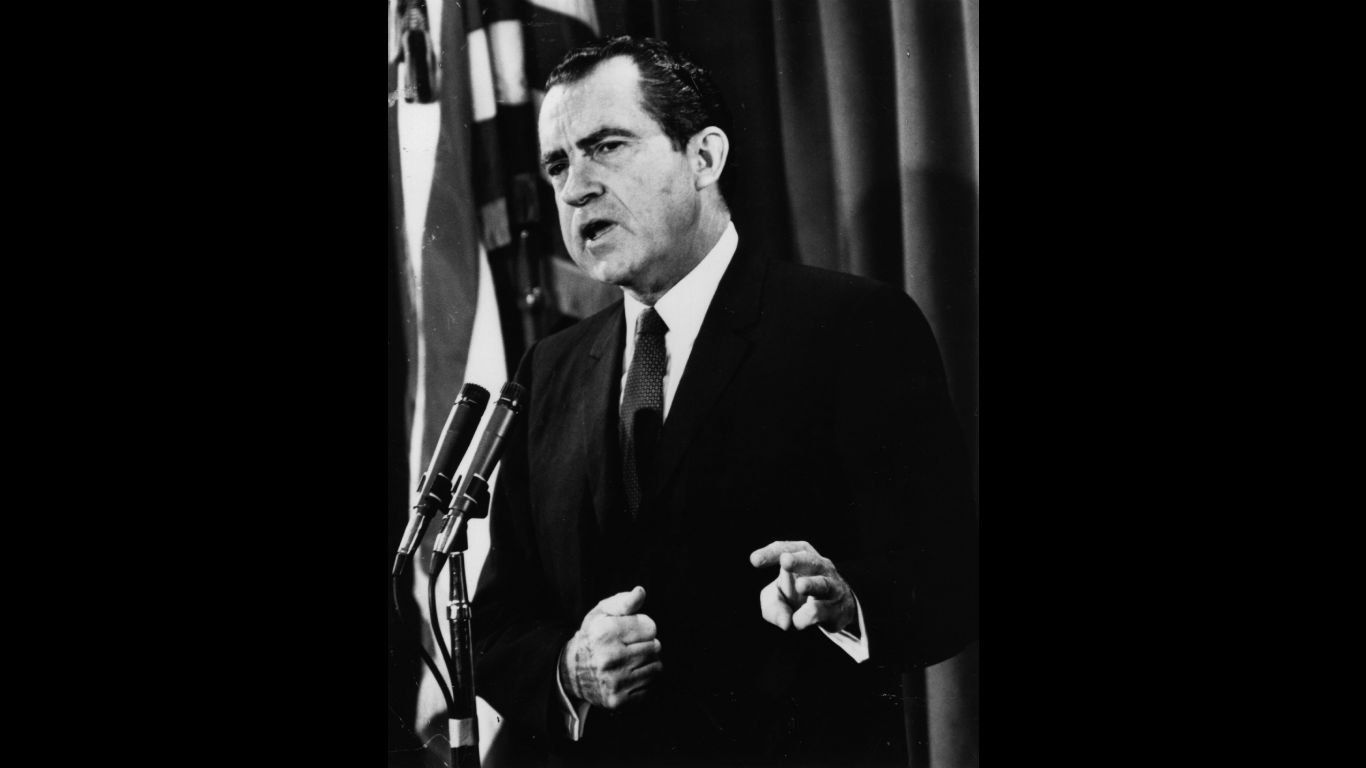
1974: Nixon resigns
> Date: Aug. 8
> Location: Washington D.C.
President Richard Nixon announced his resignation amid impeachment proceedings stemming from the Watergate scandal and the administration’s attempt to resist a congressional investigation. The scandal exposed abuses of power by the White House after five burglars were caught breaking into the Democratic National Committee headquarters in the Watergate office complex in Washington, D.C. in 1972. Nixon became the only U.S. president to resign.
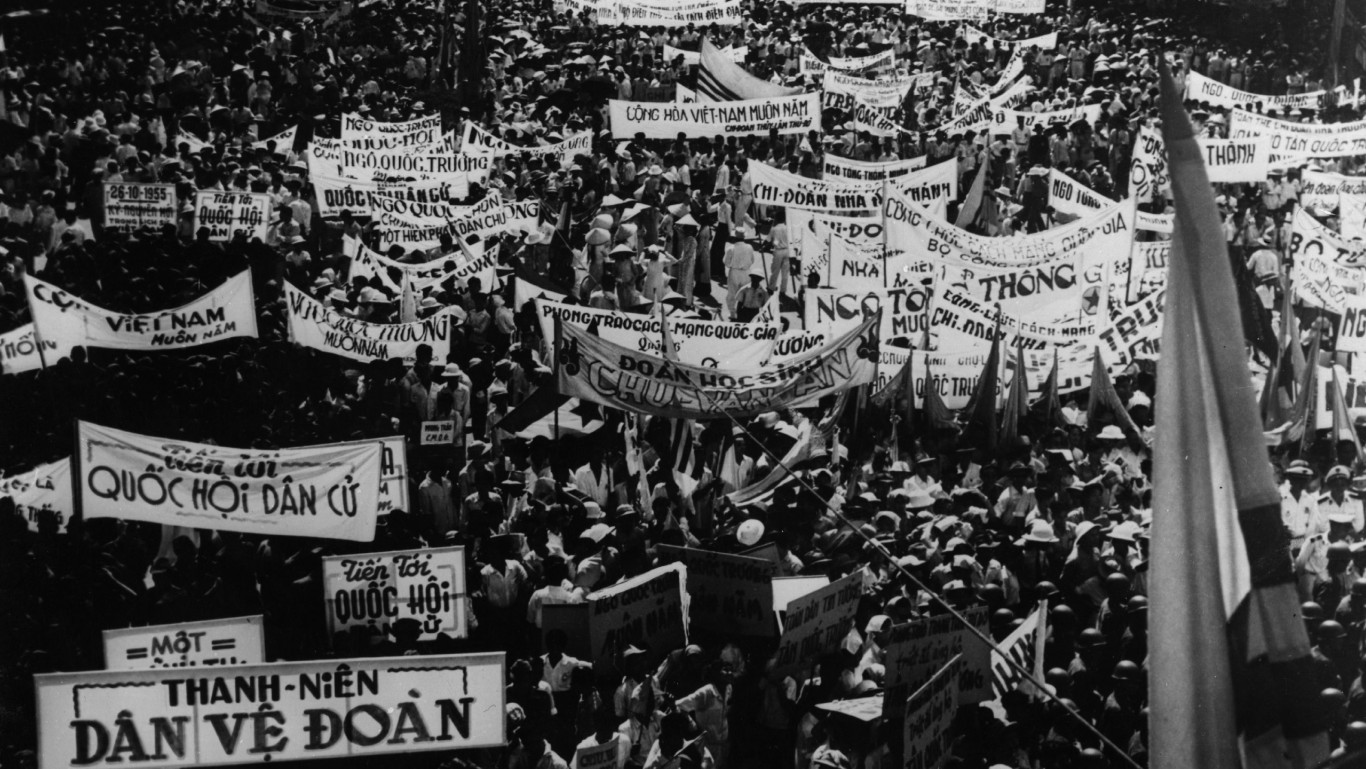
1975: Saigon falls
> Date: April 30
> Location: South Vietnam
Two years after the last American troops left Vietnam, communist troops from North Vietnam captured Saigon, ending nearly two decades of relentless war in the rice paddies and jungles of that Southeast Asian nation. The United States recorded a total of 58,220 fatal casualties.

1976: The Concorde changes air travel
> Date: Jan. 21
> Location: London and Paris
Two supersonic Concorde jets took off simultaneously — one from London to Bahrain and the other from Paris to Rio de Janeiro via Dakar in Senegal — marking the first time paying passengers enjoyed commercial travel at faster than the speed of sound. Sixteen Concordes were put into service. Though they could slash travel time from New York to London in half, the high cost of maintenance, soaring ticket prices, as well as a fatal accident in 2000, would seal the fate of the narrow, slope-nosed aircraft.

1977: Rise of the personal computer
> Date: January
> Location: Chicago
Personal home computers began to emerge in the 1970s, but many of the earliest versions resembled calculators that would plug into televisions sets. By 1977, however, the desktop home computer began to resemble the more modern versions – with an accompanying computer screen and a magnetic tape or floppy disk storage device. The Commodore PET was unveiled at the Consumer Electronics Show in Chicago that year, while the first Apple II and Radio Shack’s TRS-80 also went on sale.
[in-text-ad]
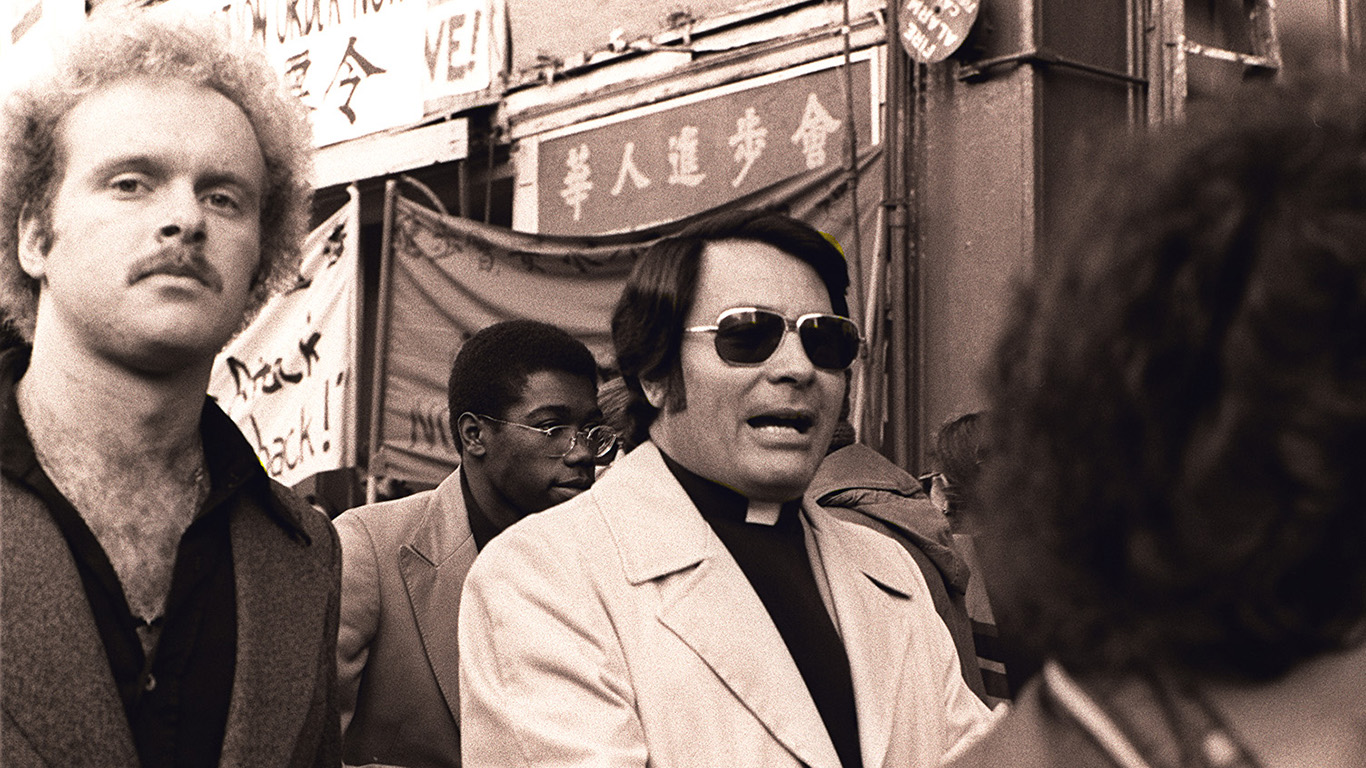
1978: Cult’s mass suicide
> Date: Nov. 18
> Location: Jonestown, Guyana
In one of the worst recorded acts of cult-related mass murder-suicide, more than 900 people died — nearly all of the victims and perpetrators drank a powdered drink mix laced with cyanide. Most of the victims were Americans, devotees of Peoples Temple cult leader Jim Jones, a former Methodist-trained preacher who built a following and led the flock to Guyana. Among the dead were 276 children. A small number of cult defectors were killed by Peoples Temple gunmen who also killed Leo Ryan, a California congressman who had gone to Guyana to investigate Jonestown.
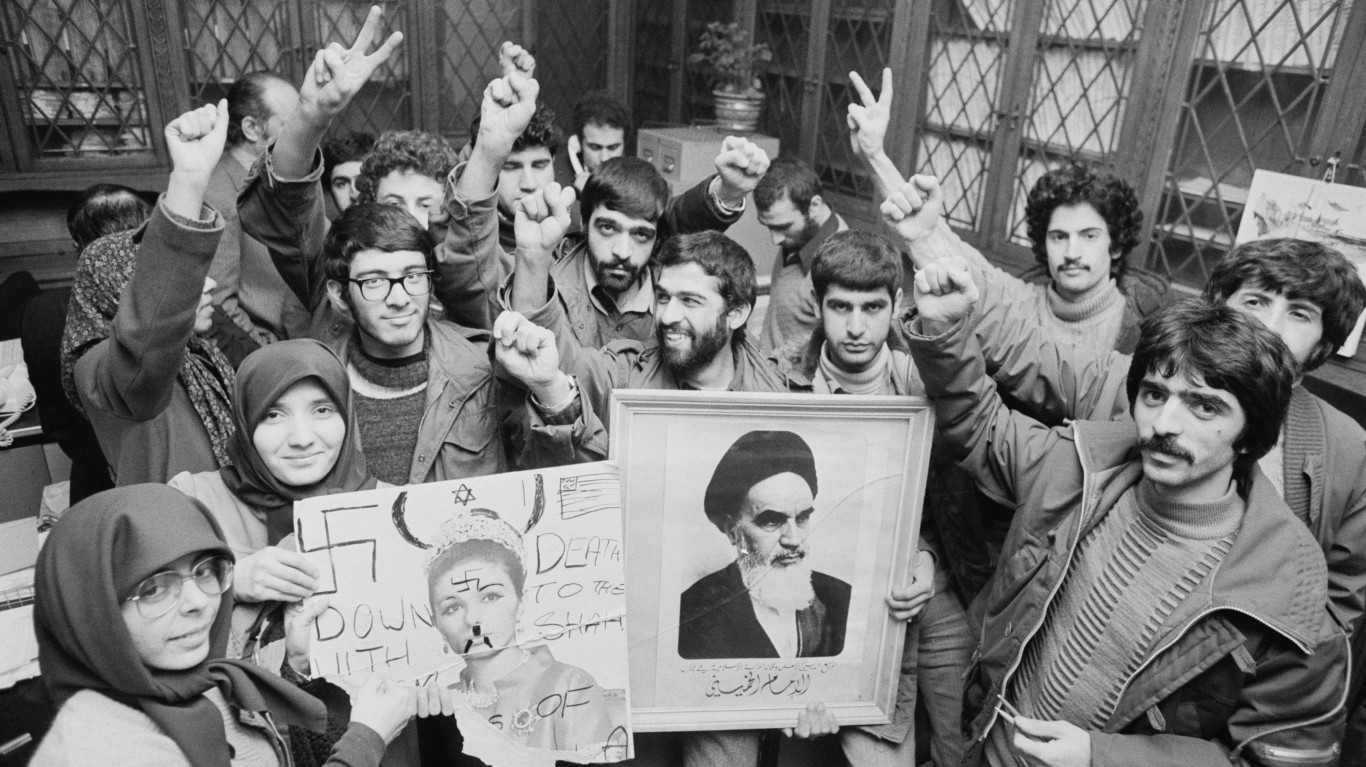
1979: Islamic Republic born in Iran
> Date: Feb. 11
> Location: Tehran
Worsening economic conditions in 1970s Iran, as well as increasing discontent with the government and wide support for religious leader in exile Ayatollah Ruhollah Khomeini led to a popular uprising that ended the reign of Mohammad Reza Shah Pahlavi. The shah and his family fled Iran in January 1979, and on Feb. 11, the monarchy was dissolved. On April 1, Khomeini declared Iran an Islamic republic. With support among the nation’s clergy and their many followers, Khomeini began rebuilding Iranian society based on conservative Shiite religious principles. In November, a mob raided the U.S. embassy, taking more than 60 Americans hostage. The crisis would be influential in the following year U.S. presidential election and would not fully resolve until January 1981.
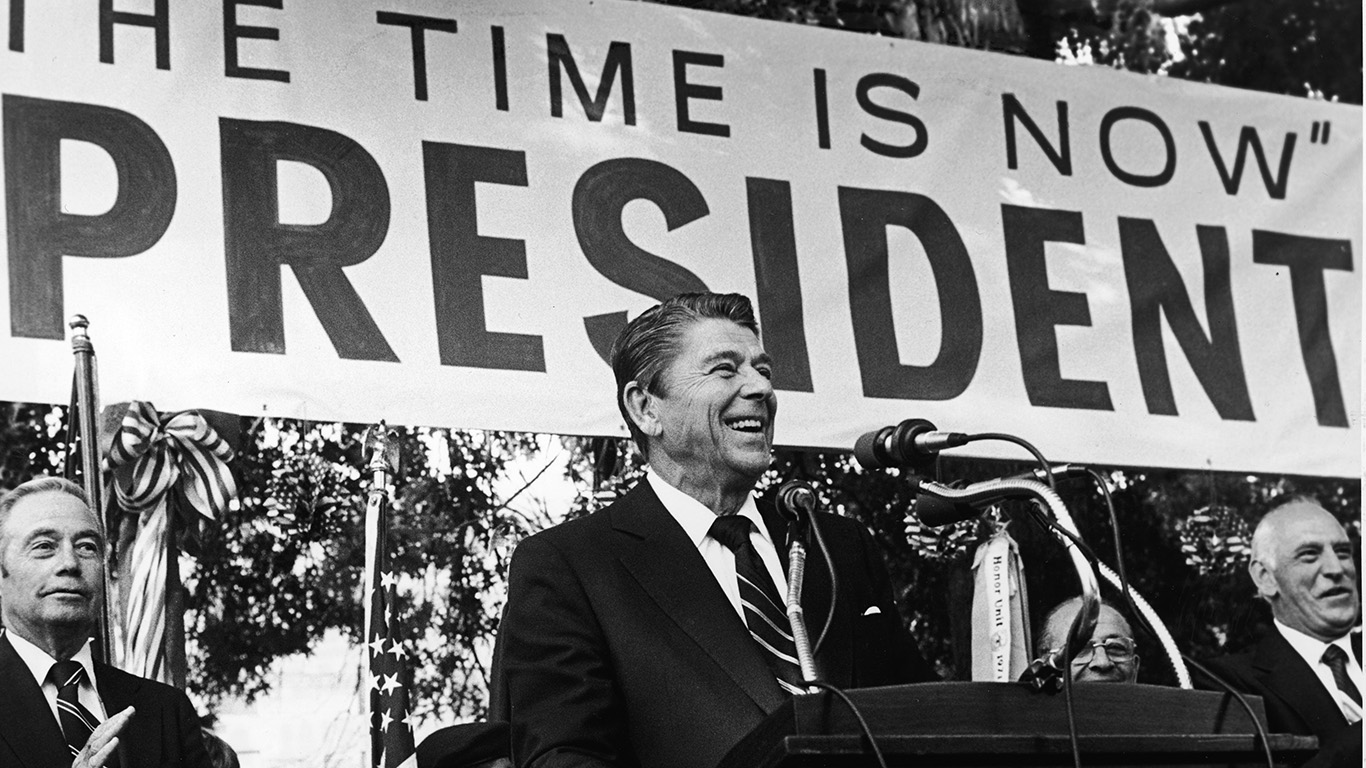
1980: Reagan elected
> Date: Nov. 4
> Location: Washington, D.C.
With the United States in an economic malaise and the Iranian hostage crisis hobbling the presidency of Jimmy Carter, Ronald Reagan was elected the 40th president in a landslide. Reagan, who would serve two terms, was the oldest man elected president at the time. Reagan’s election changed the trajectory of American politics, ushering in an era of conservative leadership. During his tenure, Reagan took a more aggressive approach to the Soviet Union and increased defense spending. Reagan convinced Congress to cut taxes, a move that many economists credit with triggering an economic boom in the 1980s.

1981: AIDS impacts America
> Date: June 5
> Location: Los Angeles
The U.S. Centers for Disease Control and Prevention published a report about five gay men who had been diagnosed by local physicians with a rare form of pneumonia — the first reported U.S. cases of what would later become known as HIV/AIDS. The infectious autoimmune disease was spreading so fast that by the end of 1982, 500 Americans would die from what the CDC later called acquired immune deficiency syndrome, or AIDS. The death toll would rise to 5,000 by 1985.

1982: Mexico triggers regional debt crisis
> Date: Aug 12
> Location: Mexico City
Global economic stagnation in the 1970s and early 1980s, as well as excessive borrowing among Latin America’s biggest economies, boiled over when Mexico’s Finance Minister Jesús Silva-Herzog told the U.S. Federal Reserve his country could no longer service its debt of $80 billion. After the announcement, lenders realized virtually every country in Latin America, led by Brazil, Argentina, and Mexico, was not able to pay back loans. The crisis would lead to years of eroding wages, weak to negative economic growth, sky-high unemployment, severe austerity measures, and political instability — known as the “lost decade” in Latin America.

1983: The internet is born
> Date: Jan. 1
> Location: Multiple
The internet as we know it today – a seemingly endless collection of websites hosted on servers scattered across the globe – was still more than a decade away in 1983. At the beginning of the year, however, the Advanced Research Projects Agency Network (ARPANET) — a small network for academics and researchers — transitioned to the standard TCP/IP protocol of the World Wide Web. The protocol would become the internet’s cornerstone and technical foundation as it allows expanded available address space. The protocol also decentralizes the network, thus also expanding accessibility.
[in-text-ad-2]

1984: Chemicals kill thousands in India
> Date: Dec. 2
> Location: Bhopal, India
The chemical disaster in Bhopal is still considered history’s worst industrial disaster. About 30 tons of methyl isocyanate, an industrial gas used to make pesticide, were released at a Union Carbide Corp. plant. About 600,000 poor residents of nearby shanty towns were exposed to the highly toxic compound. The gas killed about 15,000 people and countless farm animals, according to Indian government estimates. The calamity also led to a generation of birth defects. To this day, locals claim the now-abandoned site is riddled with toxic materials left behind by Union Carbide, which was acquired by Dow Chemical in 2001.
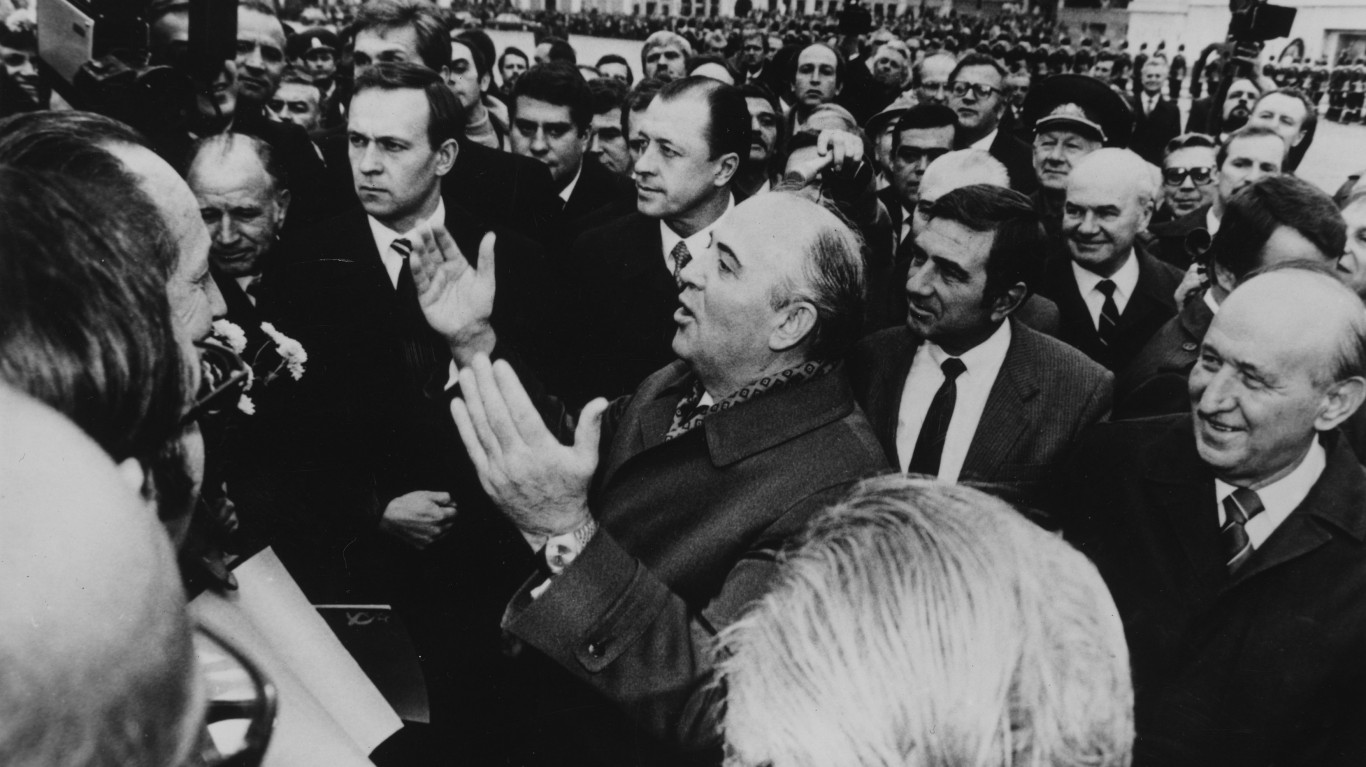
1985: Reagan, Gorbachev meet
> Date: Nov. 19
> Location: Geneva
Despite his often bellicose criticism of the Soviet Union, Reagan agreed to meet with his counterpart, Mikhail Gorbachev, in Geneva in the first meeting between leaders of the Cold War foes in nearly a decade. Though the meeting yielded little of substance, it initiated a closer relationship between the two men, who both seem committed to scaling back the nuclear arms race between the two nuclear superpowers.

1986: Chernobyl disaster
> Date: Apr. 26
> Location: Pryp’yat, Soviet Union
A combination of poor design and human error led to a power surge in a reactor in the Chernobyl nuclear power plant and to a massive explosion that put highly radioactive material into the air. Soviet officials tried to cover up the incident, but Swedish scientists noticed the increased levels of radioactivity. It took a little over a week for the radioactive emissions to be contained, but by then radioactive particles had already spread thousands of miles by wind currents to countries as far away as France. With the area around the plant deemed unsafe, the government created a 1,600 square mile area “exclusion zone,” and more than 220,000 people had to be resettled. The radiation caused deformities in nearby livestock and cancer in many people near the blast. Though exact figures are hard to come by, the UN reported years later there were over 20,000 cases of thyroid cancer in children who were in the affected areas. The Chernobyl disaster is still considered the worst nuclear power failure in history.
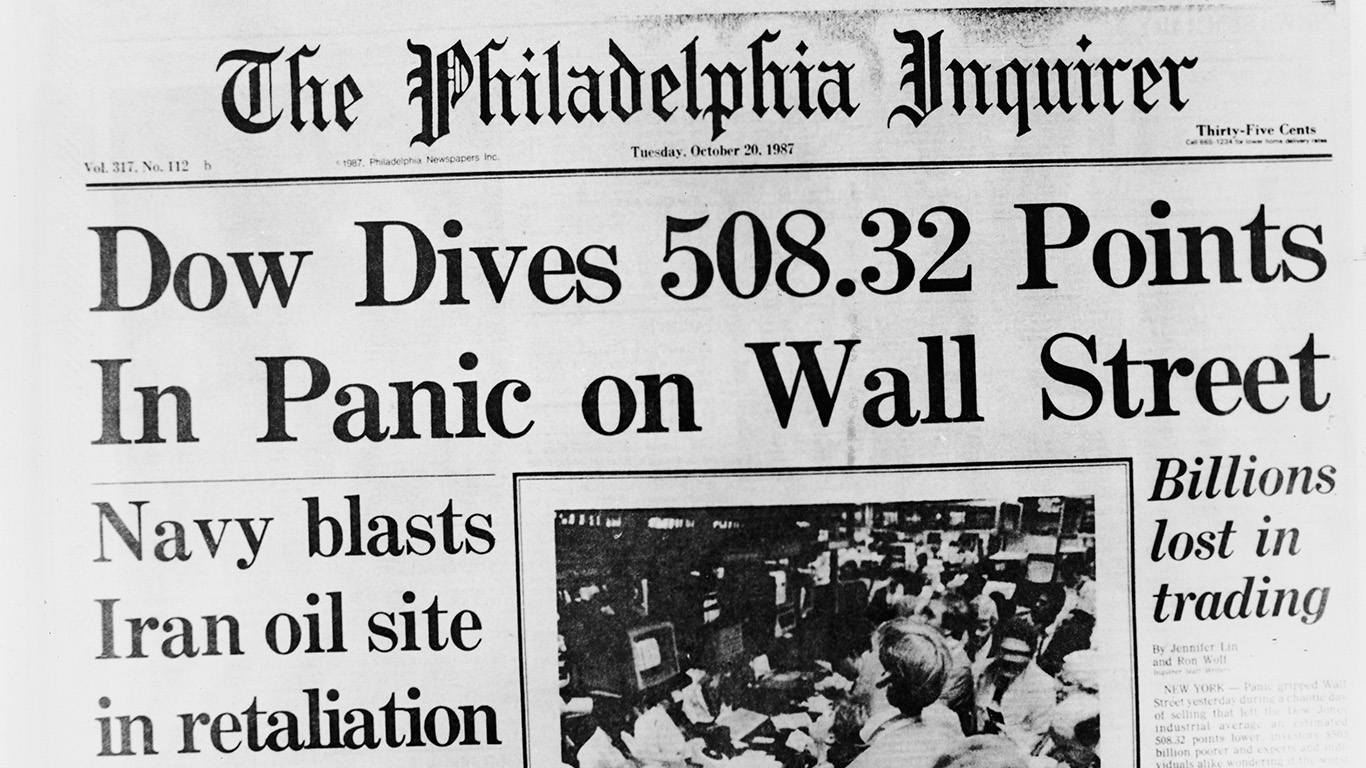
1987: Stock market tanks
> Date: Oct. 19
> Location: Worldwide
The Dow Jones Industrial Average plunged 508 points, or more than 22%, on Oct. 19, 1987, later referred to as Black Monday — a greater percentage than the crash in 1929. Among the reasons cited for the drop were rising tensions in the Persian Gulf, concern over higher interest rates, and the belief that the bull market is ending. Computerized trading, relatively new at the time, accelerated trade orders, which sped up the market drop. As a result of the collapse, exchanges added so-called circuit breakers to halt trading when stocks fall too fast. This measure is designed to provide investors a cooling off period and avoid a panic.
[in-text-ad]

1988: End of fighting in Iran-Iraq war
> Date: July 20
> Location: Iraq-Iran border
From 1980 to 1988, neighboring Middle East countries Iran and Iraq were engaged in a protracted war. It began when Iraqi dictator Sadam Hussein launched an attack on Iran in 1980, sensing an opportunity in the wake of the 1979 Iranian Revolution. Iraqi forces initially made incursions into Iranian land, but they lost the area gained in 1982 after Iran mobilized its military and repelled the Iraqi forces. Hussein sought a peace deal that year, but Iranian leader Ruhollah Khomeini refused. From 1982 to 1988, the fighting was characterized by sporadic missile launches, attacks on each others’ oil tankers, and the use of chemical weapons, mostly by the Iraqis. By 1988, Iran’s economy was in dire straits, forcing Iran to agree to a UN-brokered ceasefire. The two countries signed an official peace treaty in 1990. Anywhere from 500,000 to 1 million troops were killed in the war, as well as up to 100,000 Kurds.

1989: The Berlin Wall falls
> Date: Nov. 9
> Location: Berlin, East and West Germany
Cracks in the monolithic Soviet bloc started to appear in the 1980s, and the very symbol of communist repression came crashing down in November, when the Berlin Wall was breached, ending a 28-year division of the city. On Nov. 9, a spokesman for East Berlin’s Communist Party said citizens of East Germany would be free to cross the country’s borders. Almost immediately Berliners started slamming the wall with axes and sledgehammers. By nightfall, the celebration turned into what one observer called “the greatest street party in the history of the world,” and the city was reunited. East and West Germany reunited one year later.

1990: Democracy in Poland
> Date: Jan. 28
> Location: Poland
With the hold of the Soviet Union and communism on East Europe loosening, Poland’s ruling communist party voted to dissolve and become more moderate. In the following elections, Lech Wałęsa, leader of the Solidarity Movement and the 1983 Nobel Peace Prize laureate, won the election and became president.
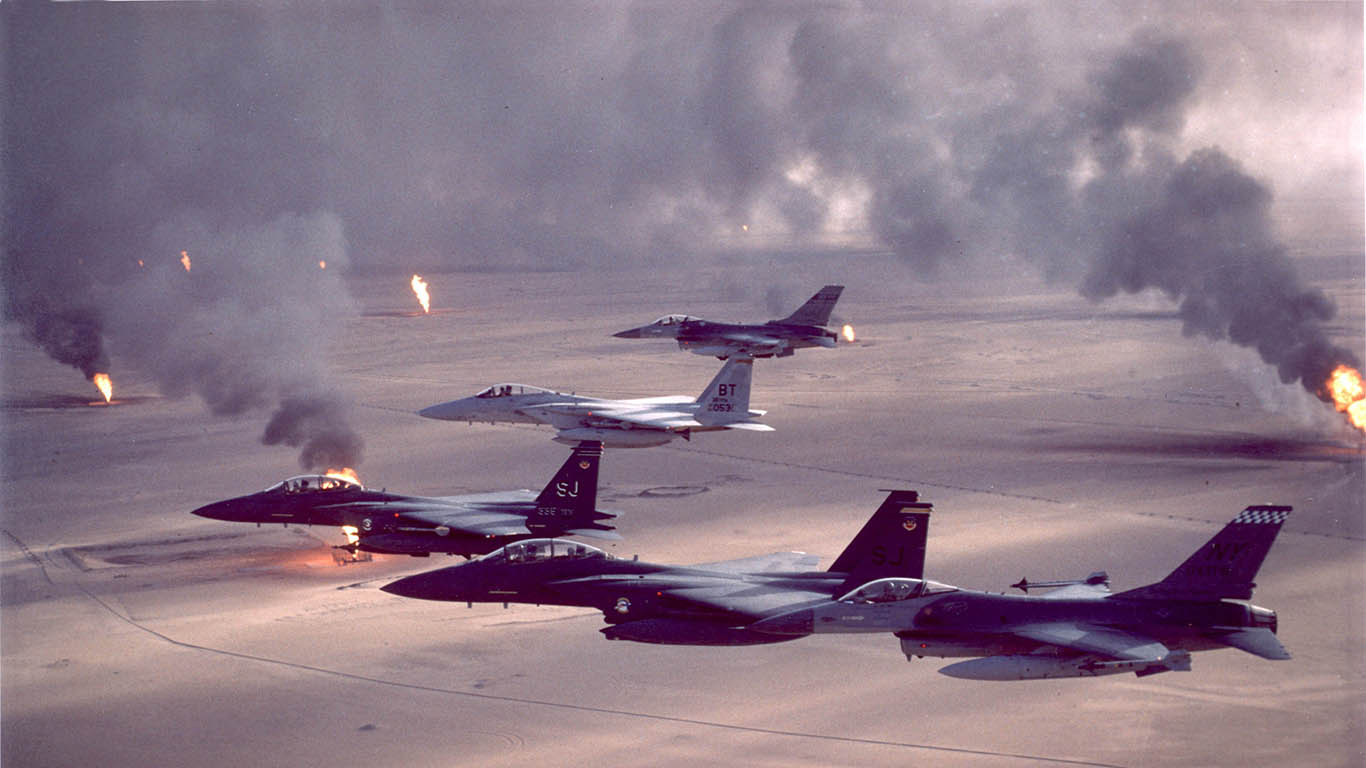
1991: America goes to war in Middle East
> Date: Jan. 17
> Location: Saudi Arabia and Kuwait
After Saddam Hussein’s Iraq invaded and occupied Kuwait on Aug. 2, 1990, the United States sent forces to defend neighboring Saudi Arabia from being overrun and to protect its oil assets there, calling it Operation Desert Shield. With Saudi Arabia secured, the United States implemented Operation Desert Storm to push Iraqi forces back across the border with Kuwait in a military operation that lasted until a ceasefire took effect in April.

1992: Cold War ends
> Date: Feb. 1
> Location: Camp David, Maryland
Just weeks after the dissolution of the Soviet Union on Dec. 26, 1991, U.S. President George H.W. Bush and his Russian counterpart, Boris Yeltsin, met at Camp David to formally declare the end of the Cold War that began shortly after the end of World War II. The meeting came days after both countries announced they would stop aiming nuclear missiles at each other. Russia declared its 11 former communist satellite republics – from Armenia to Uzbekistan – independent.

1993: The EU becomes reality
> Date: Nov. 1
> Location: Brussels
The Treaty of the European Union, also known as the Maastricht Treaty, went into effect in November, after years of political wrangling. Among other concessions, the treaty allowed the U.K. and Denmark to opt out of the common euro currency. The treaty opened the way to removing border controls among member states and invited new members to join the union.
[in-text-ad-2]

1994: Rwandan genocide
> Date: April-July
> Location: Rwanda
For decades, Rwanda was embroiled in a conflict between the country’s two major ethnic groups — the Hutus and the Tutsis. Over 100 days, an estimated 800,000 people were killed, mostly Tutsis, but some moderate Hutus as well. When a Tutsi militant group eventually gained control of the country, some 2 million Rwandans fled to nearby African nations. In 2008, three former Rwandan officials were convicted by an international court of organizing the genocide.

1995: Domestic terror strikes Oklahoma
> Date: April 19
> Location: Oklahoma City
In the deadliest domestic terrorist attack in U.S. history, anti-government radicals Timothy McVeigh and Terry Nichols bombed the Alfred P. Murrah Federal Building in Oklahoma City. They timed the truck-bomb attack for a weekday morning in order to maximize casualties. For the murder of at least 168 people, including 19 children who were in a childcare center in the building, and the injury of hundreds of others, an unremorseful McVeigh was executed by lethal injection on June 11, 2001. Nichols is serving a life sentence without the possibility of parole.

1996: The dawn of cloning
> Date: July 5
> Location: Midlothian, Scotland, U.K.
Dolly the Sheep entered the annals of bioengineering history when scientists at Scotland’s Roslin Institute became the first to not only successfully clone a mammal, but also the first to do so using an adult cell rather than an embryonic one. After 277 cell fusions that developed 29 embryos, the team managed to turn an udder cell into a virtually identical biological carbon copy of the sheep from which it came.
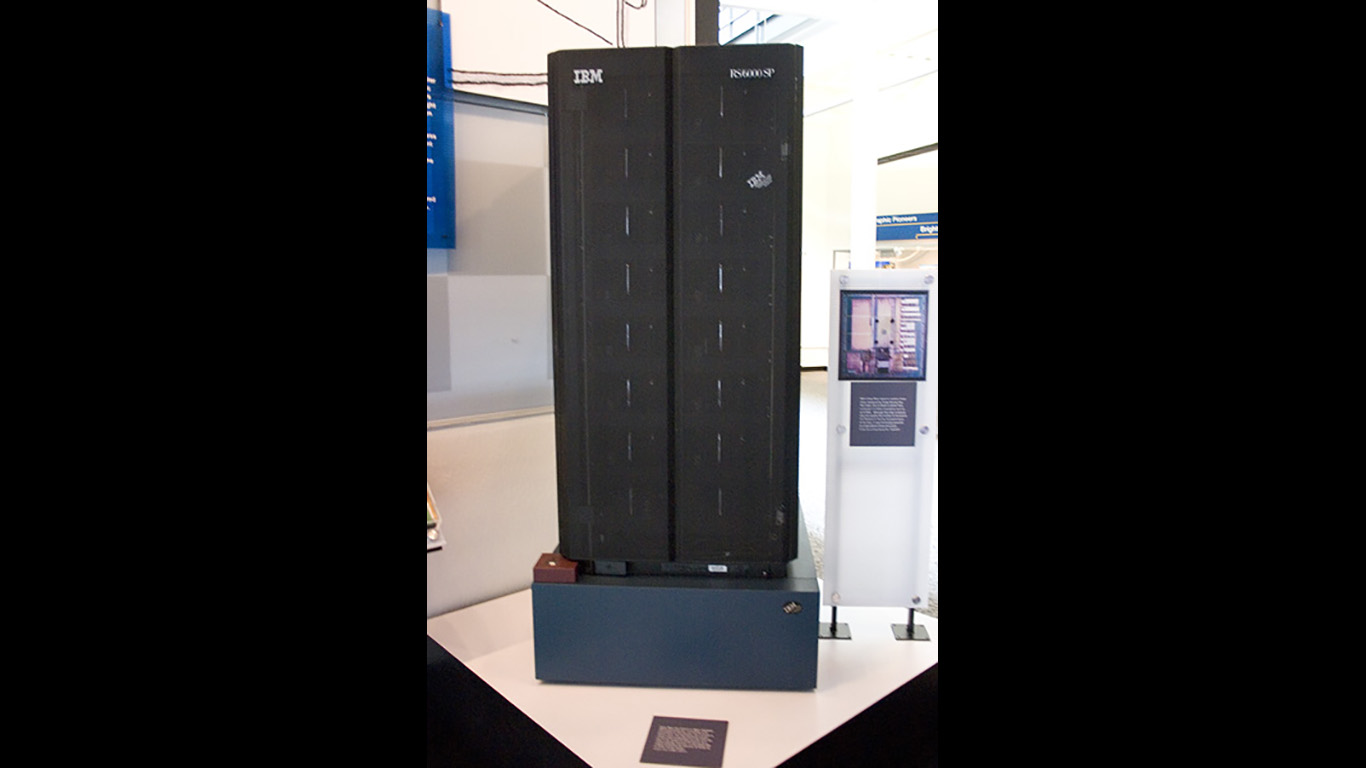
1997: Machine tops chess champ
> Date: May 11
> Location: New York City
Artificial intelligence and machine learning notched a significant victory in 1997, when IBM’s Deep Blue machine defeated a world chess champion. The refrigerator-sized computer lost to grandmaster Garry Kasparov in the first match but proceeded to beat him twice and tie him three times in the next five games.
[in-text-ad]
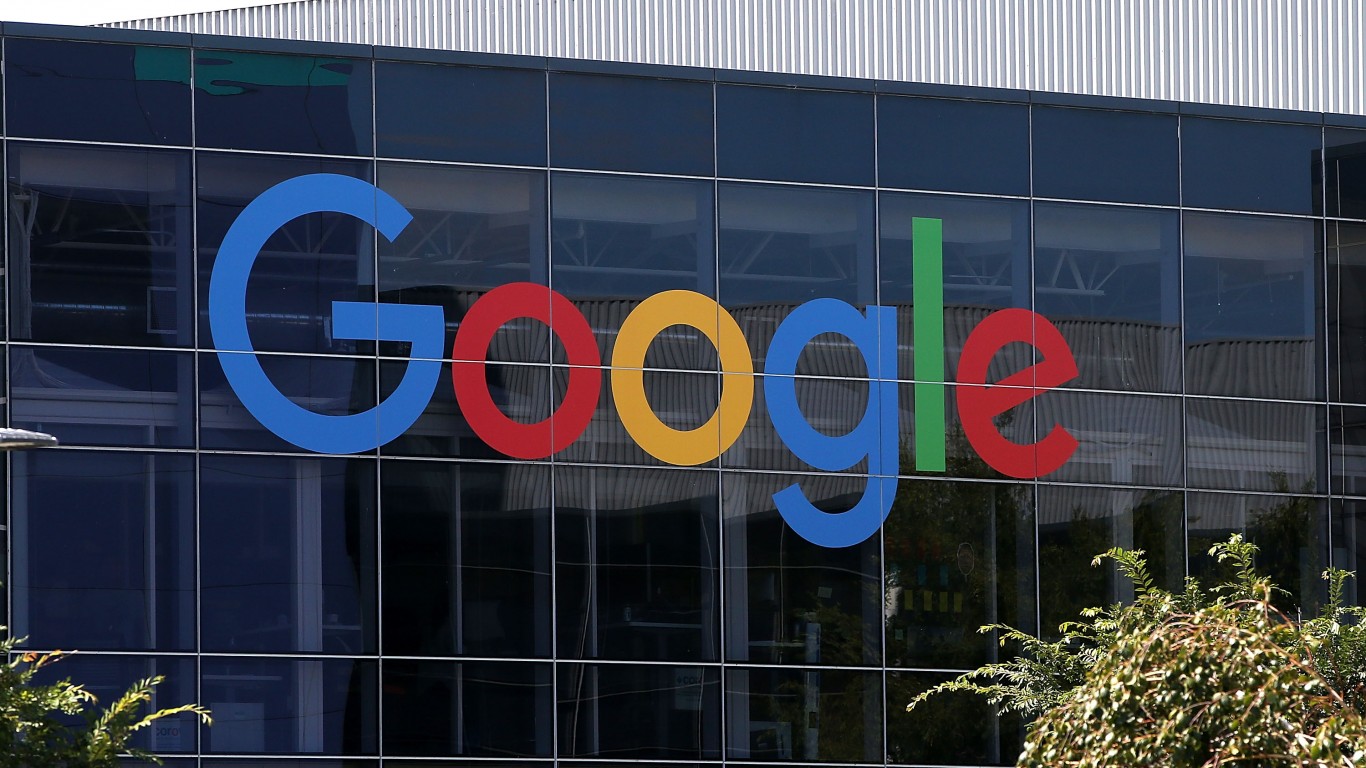
1998: The age of Google begins
> Date: Sept. 4
> Location: Menlo Park, California
With seed money from Sun Microsystems co-founder Andy Bechtolsheim and Amazon founder Jeff Bezos among others, Stanford University Ph.D. students Larry Page and Sergey Brin launched the search engine Google. The digital behemoth Google Inc., now Alphabet Inc., is an $863 billion company with several subsidiaries, including YouTube, autonomous-car development company Waymo, and X, the company’s research and development division.
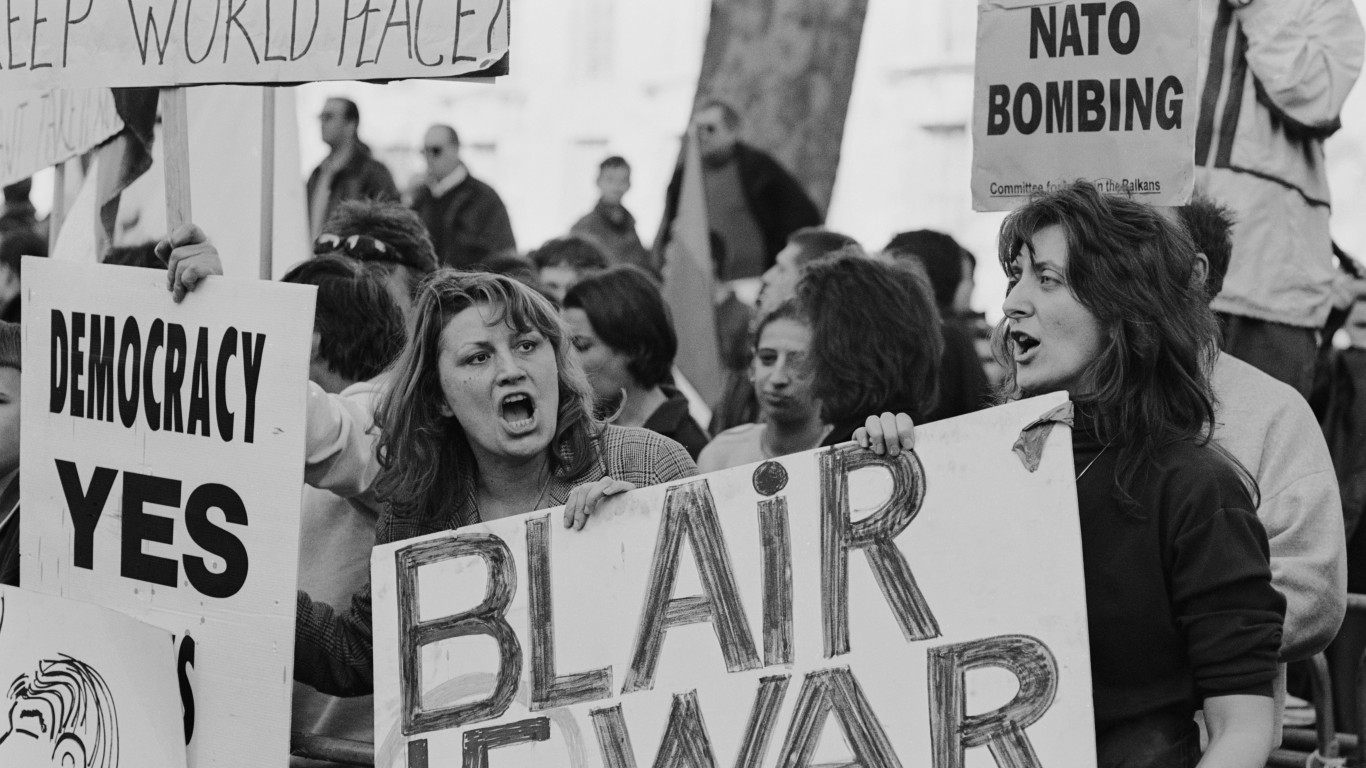
1999: NATO’s first independent strike
> Date: March 24
> Location: Federal Republic of Yugoslavia
In order to get Yugoslav forces out of Kosovo during the Kosovo War, NATO forces initiated their first-ever military campaign against the Federal Republic of Yugoslavia (now Montenegro and Serbia) without U.N. Security Council authorization as Russia and China opposed the attack. The NATO air strikes aimed at stopping an onslaught against ethnic Albanians by the government of Slobodan Milošević. The NATO attacks lasted nearly three months, culminating in the withdrawal of Yugoslav forces from Kosovo.

2000: International Space Station opens
> Date: Nov. 2
> Location: Low earth orbit
Commanders Bill Shepherd from the United States and Yuri Gidzenko of Russia, along with Russian flight engineer Sergei Krikalev, became the first temporary residents of the International Space Station. There have been 239 total visitors to the ISS, some of them multiple times, led by 151 from the United States and 47 from Russia.

2001: 9/11
> Date: Sept. 11
> Location: Multiple
In the worst attack on U.S. soil since the Japanese bombed Pearl Harbor in 1941, 19 hijackers inspired by Islamist extremism killed nearly 3,000 people by crashing three passenger-laden commercial aircraft into the World Trade Center towers in lower Manhattan and the Pentagon in Arlington, Virginia. A fourth plane, United Airlines 93, crashed in Somerset County, Pennsylvania, after passengers and crew attempted to regain control of the plane headed to Washington D.C.

2002: Homeland Security Act
> Date: Nov. 25
> Location: Washington D.C.
Following the Sept. 11, 2001, terrorist attacks, the U.S. Congress and President George W. Bush enacted the Homeland Security Act, the biggest government reorganization of national security efforts since the Department of Defense was created in 1947. The sweeping legislation created the massive Department of Homeland Security, which is responsible for everything from protecting infrastructure from cyber attacks to managing the new U.S. Immigration and Customs Enforcement (ICE) agency.
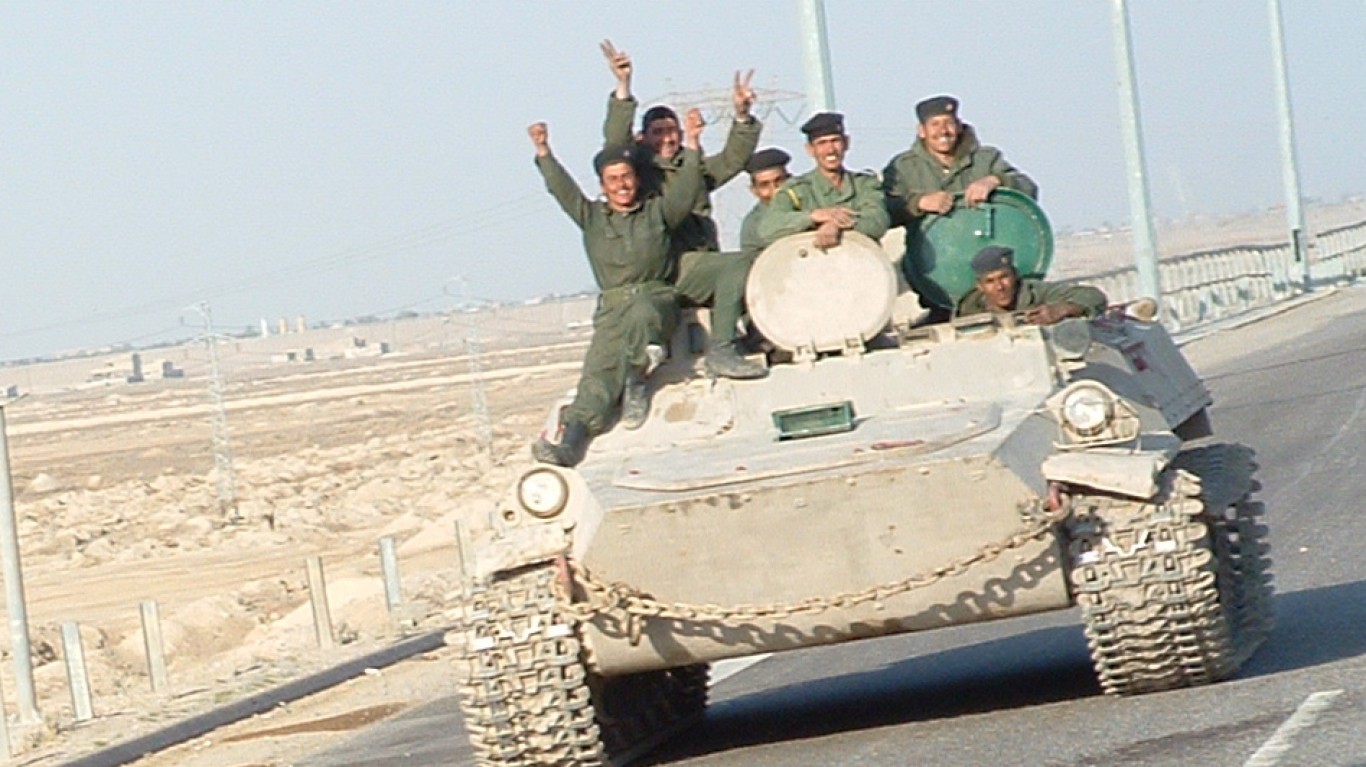
2003: US invades Iraq
> Date: March 19
> Location: Iraq
With the help of British and other allied forces, the United States began its invasion of Iraq with a rapid bombing campaign called Shock and Awe with the intention of destroying Iraq’s alleged weapons of mass destruction; the weapons were never found. Coalition forces managed to quickly topple the Iraqi regime of Saddam Hussein but had to fight insurgent forces for years afterward.
[in-text-ad-2]

2004: Facebook founded
> Date: Feb. 4
> Location: Cambridge, Massachusetts
Mark Zuckerberg, a Harvard University student, created The Facebook, a local social networking site named after the orientation materials given to incoming freshmen. Within 15 years, Facebook became a $512 billion digital advertising behemoth so integral to many people’s lives that it is criticized for helping foreign powers and propagandists influence the U.S. political system.
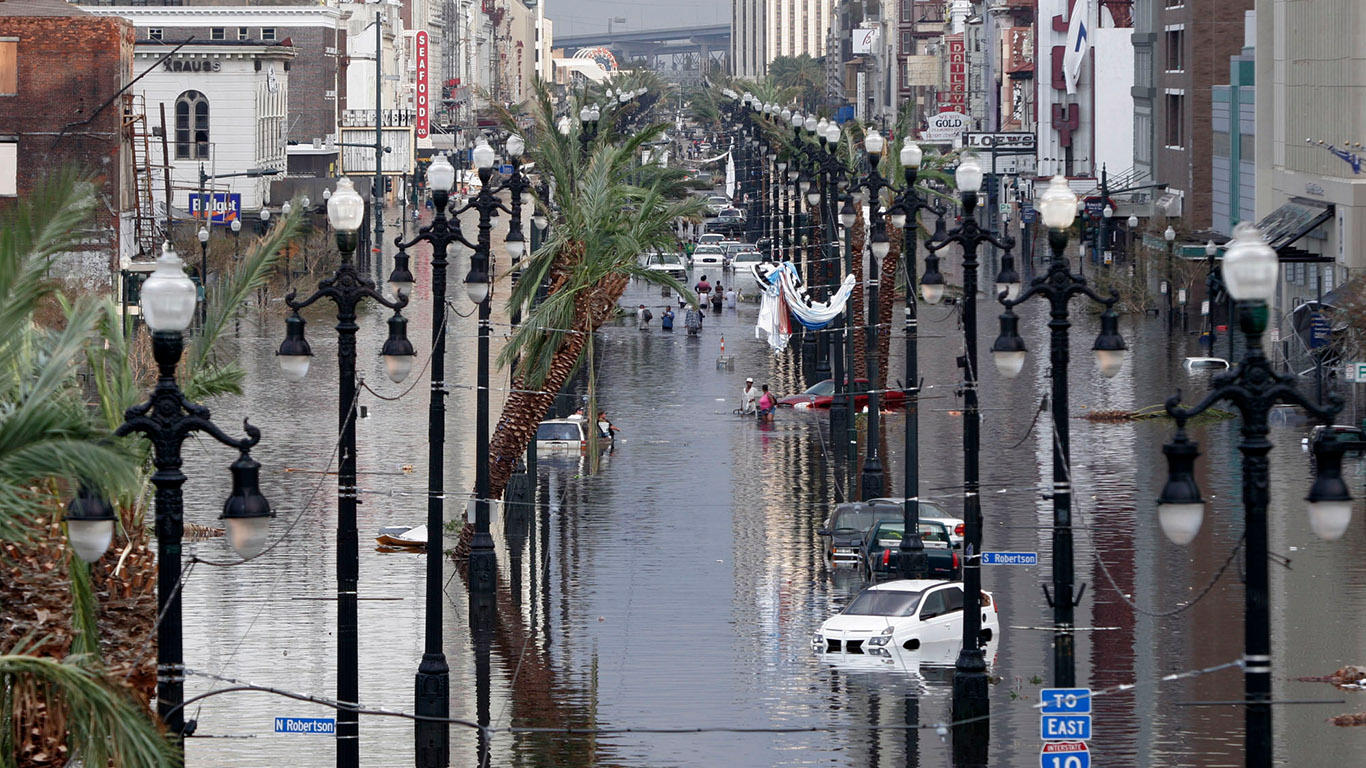
2005: Katrina overwhelms New Orleans
> Date: Aug. 29
> Location: U.S. Gulf Coast
After spending four days in the Gulf of Mexico bulking up to a category 5 hurricane, Katrina slammed into New Orleans, inundating the city and creating a humanitarian crisis that lasted for weeks. The catastrophe underscored the precarious situation not only in the Big Easy, but also the surrounding area of the Gulf Coast. At least 1,833 people in the storm’s path were killed, and the storm inflicted $161 billion in damages to the region, the costliest storm in U.S. history.
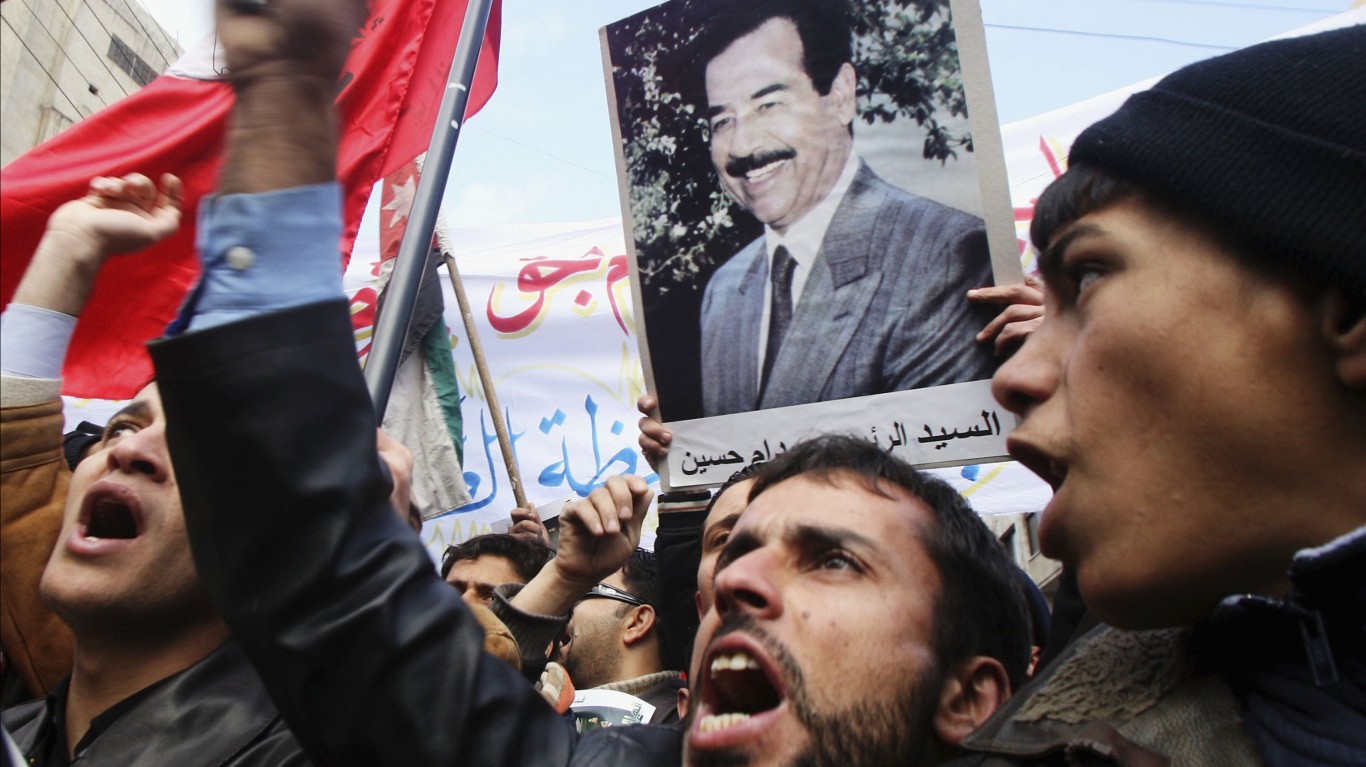
2006: Hussein executed
> Date: Dec. 30
> Location: Baghdad
Three years after U.S. soldiers pulled him from a hole in the ground where he had been hiding, Iraqi dictator Saddam Hussein was hanged. Hussein was convicted for crimes against humanity, specifically for ordering the massacre of 148 Shiites in 1982 following a failed assassination attempt against him.

2007: The iPhone
> Date: Jan. 9
> Location: San Francisco
Apple CEO Steve Jobs revealed the iPhone, which became one of the most popular branded consumer electronic devices in history. Since the first generation phone that Jobs introduced at the Consumer Electronics Show that year, there have been 24 versions of the mobile device, and more than 2.2 billion units were sold globally through 2018, when Apple stopped reporting iPhone sales. Only Samsung’s Galaxy smartphone comes close to that volume.
[in-text-ad]

2008: Dow plunges
> Date: Sept. 29
> Location: New York City
The Dow Jones Industrial Average recorded what was then the largest-ever intraday drop in points, 777.68, after Congress rejected a massive $700 billion bailout of U.S. banks. The bill would pass days later. The market reacted to months of global market turmoil amid the 2008 global financial crisis spurred by the U.S. subprime mortgage market crash. The Dow fell by more than half during the 2007-2009 Great Recession, tumbling from 14,164 on Oct. 9, 2007 to 6,594 on March 5, 2009.

2009: America’s first African-American president
> Date: Jan. 20
> Location: Washington D.C.
After winning in a landslide against Republican Sen. John McCain of Arizona, amassing 365 electoral votes and 53% of the popular vote, Barack Obama was sworn in as the first African American president of the United States. Obama inherited the worst economic crisis since the Great Depression, but with his party holding majorities in both houses of Congress at the time, the president passed a stimulus package and his signature Affordable Care Act.
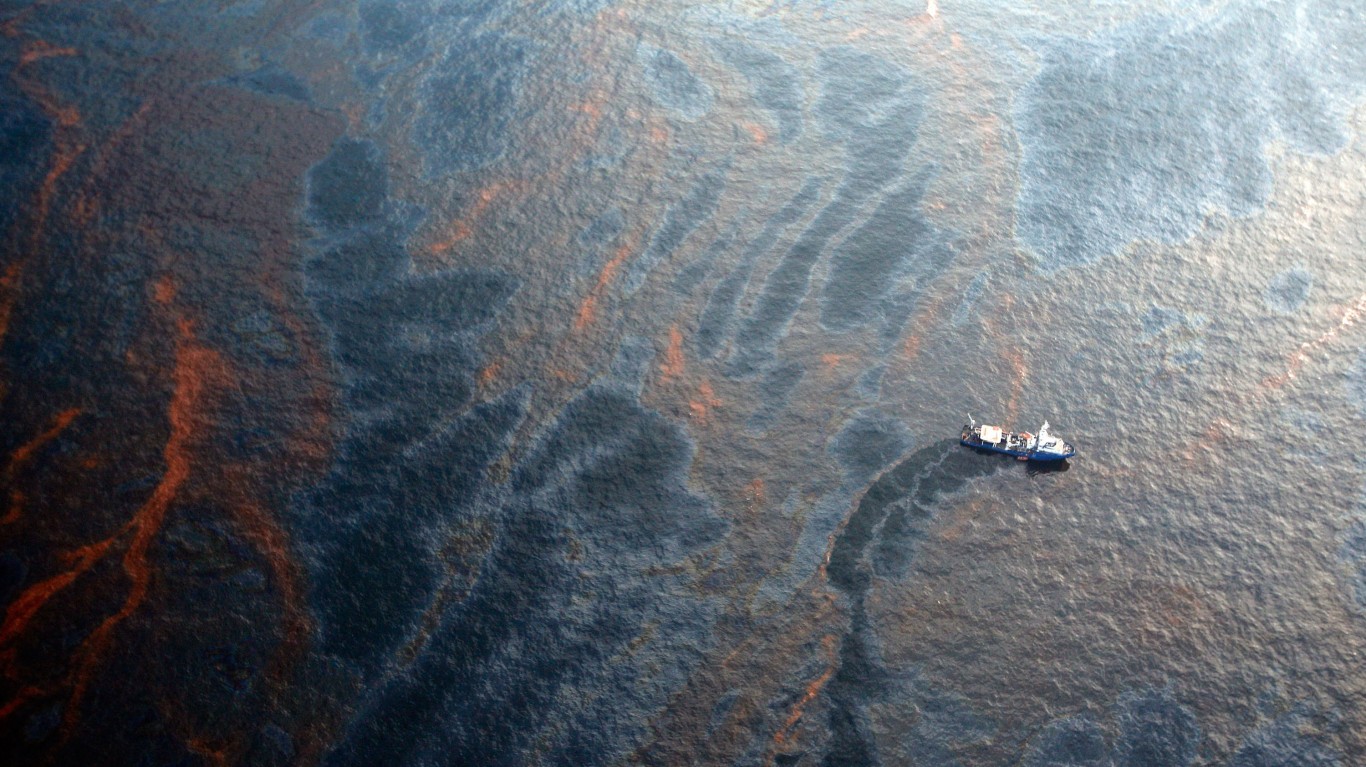
2010: Catastrophic oil spill
> Date: April 20
> Location: Gulf of Mexico, Louisiana
Eleven workers died and 17 were injured after an explosion and fire erupted on the Deepwater Horizon offshore drilling rig 40 miles from the Louisiana coast. The explosion caused the largest environmental disaster in U.S. history, spewing 3 million barrels of crude oil over the three months it took to stop the leak. British oil company BP says costs from the clean-up, legal fees, and settlements reached $65 billion.
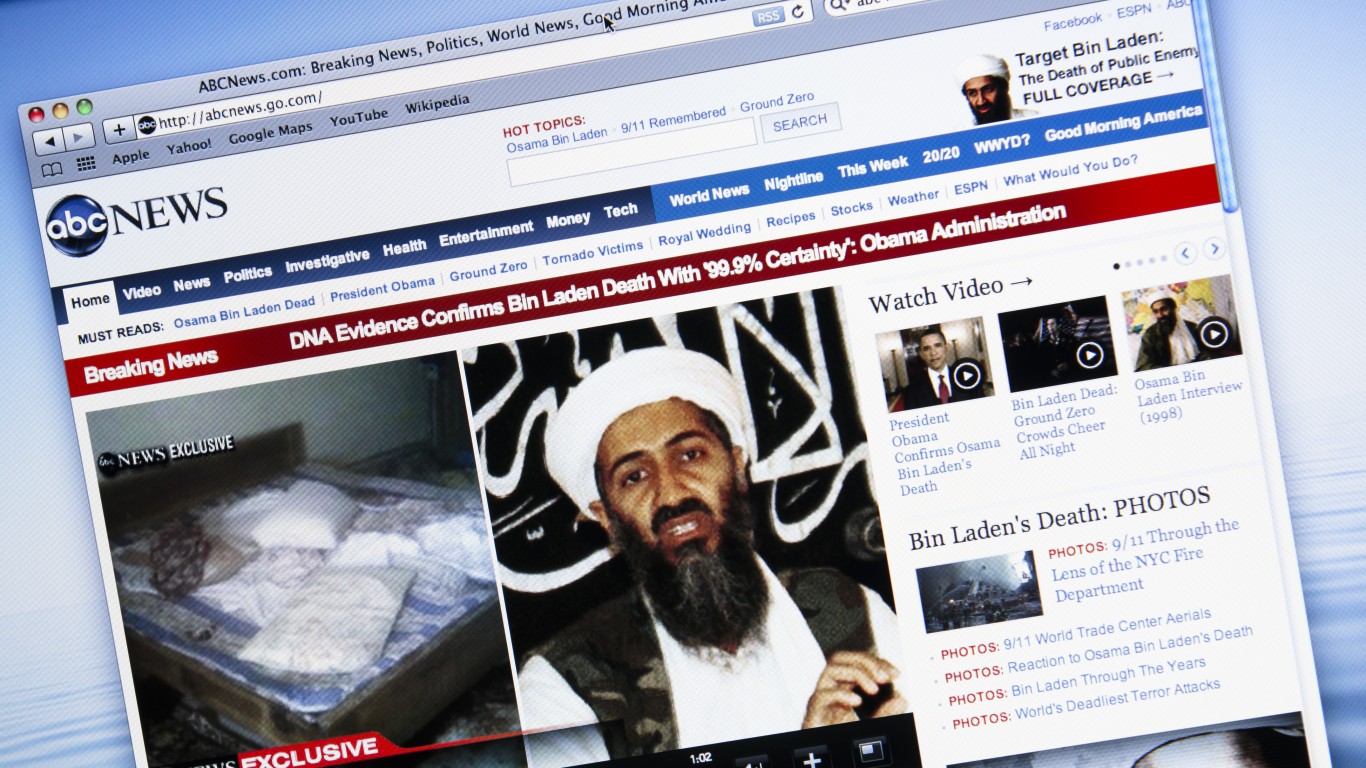
2011: Bin Laden killed
> Date: May 2
> Location: Abbottabad, Pakistan
In an intense 40-minute nighttime operation, 25 U.S. Navy SEALs hunted down and killed al Qaeda leader Osama bin Laden, mastermind of the 9/11 terrorist attacks, in a compound in Abbottabad, Pakistan. Within hours, bin Laden’s body was identified using facial recognition technology and then buried in the Arabian Sea.

2012: The ‘God Particle’ is (Probably) Discovered
> Date: July 4
> Location: Near Geneva
Nearly 600 feet below the France-Switzerland border at CERN’s Large Hadron Collider Facility, an international team of scientists discovered a new particle widely believed to be the elusive Higgs boson particle. Known as the “God Particle,” it is thought to be a fundamental component of the universe. The Higgs boson had been an important element of particle physics theory for decades, but until 2012 there had been no physical evidence to support its existence.

2013: Snowden reveals secrets
> Date: June 6
> Location: Hong Kong
After surreptitiously leaving his job at U.S. National Security Agency contractor Booz Allen Hamilton, computer security consultant Edward Snowden met secretly in Hong Kong with journalists Glenn Greenwald and Laura Poitras. Snowden revealed the first of a series of secrets about numerous U.S. and European government surveillance operations. Hailed as a courageous whistleblower and privacy champion by some and a traitor that compromised counterterrorism efforts by others, the American now resides in exile in Moscow.
[in-text-ad-2]
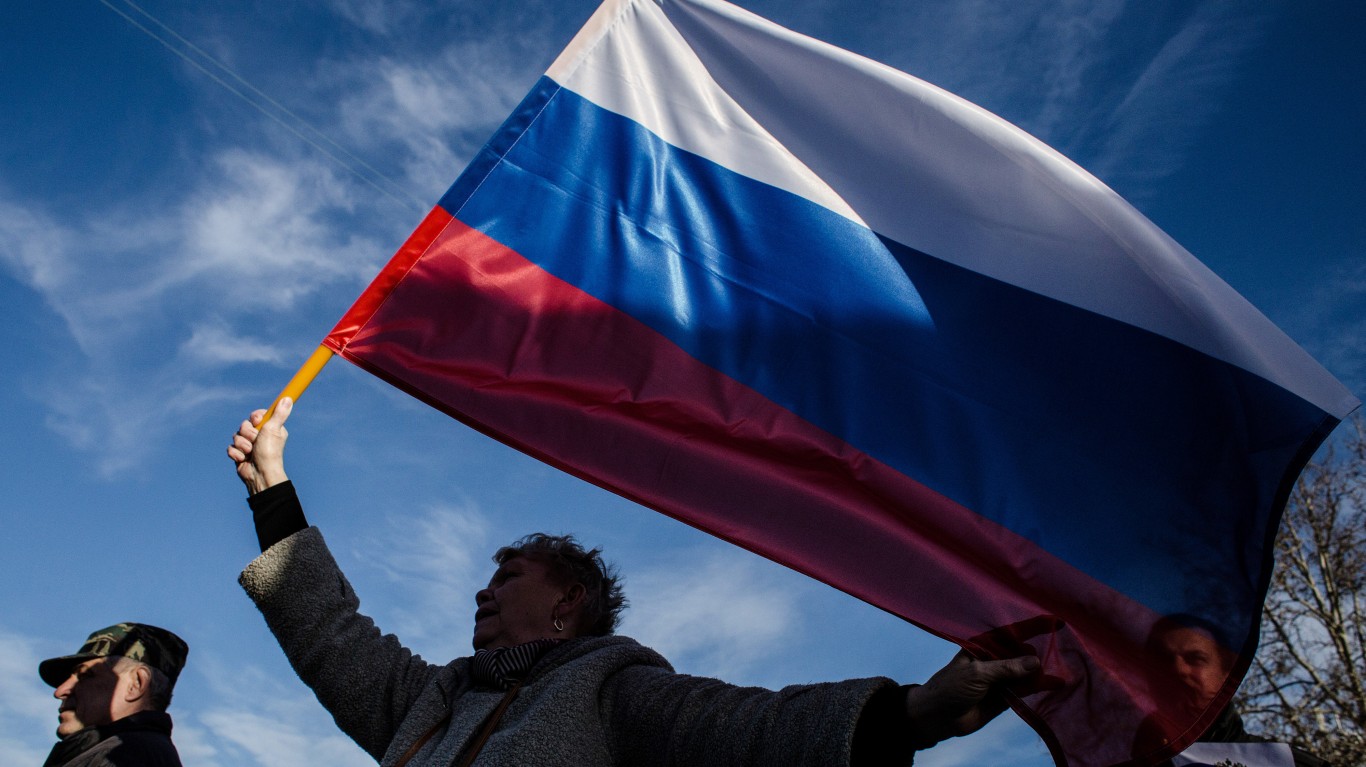
2014: Russia invades Ukraine
> Date: March 16
> Location: Crimea
Exploiting political unrest in Ukraine, Russian President Vladimir Putin orchestrated the annexation of the Crimean Peninsula. The action incited condemnation from world leaders and a raft of economic sanctions against Moscow. This strategically important and predominantly Russian-speaking region surrounded by the Black Sea was coveted by the Russians as part of their strategic efforts to check NATO expansion along Russia’s western border.

2015: NASA flies by Pluto
> Date: July 14
> Location: 3 billion miles from Earth
NASA spacecraft New Horizons became the first human-made object to fly past and observe the dwarf planet Pluto. New Horizons sent back stunning photographs of this enigmatic and distant member of the solar system, including images of a mountain range and massive iceberg-like masses floating in frozen nitrogen.

2016: Trump elected
> Date: Nov. 8
> Location: U.S.
Running on a populist agenda, Donald Trump was elected the 45th president of the United States and the fifth president in U.S. history to win despite losing the popular vote. The real estate developer and television personality ran on a platform of putting “America First” in global trade and foreign policy negotiations and cracking down on undocumented immigrants.
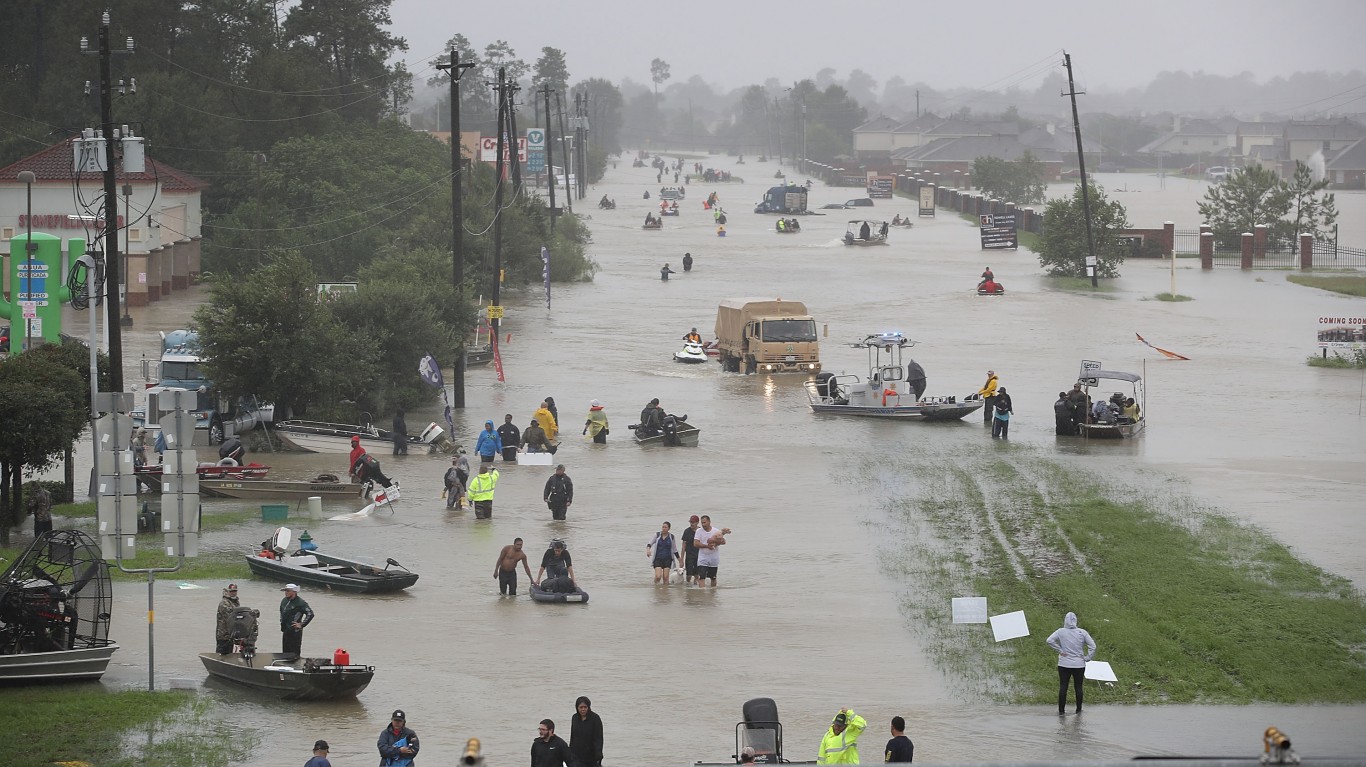
2017: Hurricane triple whammy
> Date: August-September
> Location: Multiple
Within just a month, three massive hurricanes — Harvey, Irma, and Maria — struck Texas, Florida, and the Caribbean, killing 228 people, inflicting a combined $265 billion in damages, and displacing millions of homeowners. Hurricane Maria inflicts immense damage to the U.S. commonwealth of Puerto Rico, which was already struggling due to economic insolvency.
[in-text-ad]

2018: Wildfires
> Date: November
> Location: Northern California
Wildfires engulfed northern California in November, the deadliest in the state’s history. The catastrophe killed 88 people, consuming 18,500 homes and businesses. State and federal officials estimated that it would cost $3 billion to clean up debris. Climate change activists said the conflagrations are evidence that global warming is no longer a distant concern and that it is occurring now.

2019: Trump impeached
> Date: Dec. 18
> Location: Washington, D.C.
On Dec. 18, 2019, Donald Trump became just the third U.S. president to be impeached. A whistleblower revealed that in July Trump asked Ukranian President Volodymyr Zelensky to investigate the business dealings of Hunter Biden, son of democratic presidential candidate Joe Biden, as well as cybersecurity company Crowdstrike. These requests were made just after Zelensky said Ukraine wanted to buy weapons from the United States. After the call came to light, Democratic leaders filed two articles of impeachment — for abuse of power and obstruction of Congress. They say Trump abused his power by using the office of the president to target a political opponent. The obstruction of Congress charge stemmed from accusations that Trump Administration officials tried to cover up the whistleblower’s report. Trump called the investigation a “witch hunt” and denied any wrongdoing. The House passed both articles in a vote that went almost entirely along party lines, moving the impeachment proceedings along to the Senate.
Finding a qualified financial advisor doesn’t have to be hard. SmartAsset’s free tool matches you with up to 3 fiduciary financial advisors in your area in 5 minutes. Each advisor has been vetted by SmartAsset and is held to a fiduciary standard to act in your best interests. If you’re ready to be matched with local advisors that can help you achieve your financial goals, get started now.
Thank you for reading! Have some feedback for us?
Contact the 24/7 Wall St. editorial team.